One of our favorite topics to debate is tire choice. Tires are one of the few components on a mountain bike that can be optimized to fit specific conditions or terrain. They are also a wearable item, requiring riders to periodically survey the tire landscape. With that inevitable search for fresh rubber in everyone's future, most of us have strong opinions on what brand, compound, or model is superior. And during these opinion-fueled debates, we've realized that riders often analyze how a tire performs as a front tire.
Of course, rear tire performance is important, and we don't doubt most have equally strong opinions about rear tire choice. But there is no denying that how your front tire responds to the trail dictates how fast or hard you can comfortably ride your bike. With a ton of brands releasing new tires in the last few years, we figured out what better way to sample the current crop of tires and get people talking than with a front tire comparison test. Time to see how eight different tires perform when mounted up front!
Testing Parameters
For this test, we focused on all-mountain or enduro tires designed to excel in dry, loose over hardpack, sandy, and rocky terrain. We approached each brand detailing our testing conditions and let them provide the tire they felt best suited our needs. Most brands offer a multitude of models, casings, and compounds, so putting the ball in their court seemed like the best way to avoid testing the wrong tires. All tires tested were 29-inch, and most featured the softest compound and middle-weight casing construction.
To compare each tire as apples to apples as possible, all were mounted to a Crankbrothers Synthesis Enduro carbon front wheel. The Synthesis wheels feature front and rear-specific tuned spoke tension and rim profiles. The front wheel is tuned for compliance to maximize grip and uses a wider inner rim width to increase tire volume and the contact patch with the ground. The rear wheel is tuned stiffer for added stability and uses a narrower inner rim width to support narrower tire profiles. Out back, we mounted a Maxxis DHR II, and all tires were inflated to the same pressure (per each tester's preference) with the same amount of Orange Seal sealant inside.
Michelin Wild AM2 | Schwalbe Magic Mary | Pirelli Scorpion Enduro M | Vittoria Mazza |
|
|
|
|
WTB Vigilante | Vee Tire Co Attack HPL | Continental Kryptotal Fr | Maxxis Assegai |
|
|
|
|
How We Tested 8 Tires
A lot goes into creating how a tire feels on a trail. To analyze and compare the performance differences of all eight tires, we focused on three factors:
- Cornering traction - focusing on predictability and side knob support.
- Sidewall support - focusing on tire flex in high-energy situations and tire deflection.
- Tread performance - focusing on consistency and overall grip.
We then found sections of the trail that isolated these performance factors. All tires were ridden down each section by all three testers before receiving a score per performance factor plus an average overall score.

Cornering Traction
Corners come in all shapes and sizes, and we think the best tires can bite into the ground and provide predictable traction at various lean angles. Trusting your front tire to hold a line through a turn, or anticipating when it will no longer provide traction, can greatly affect how fast you are willing to push your bike.
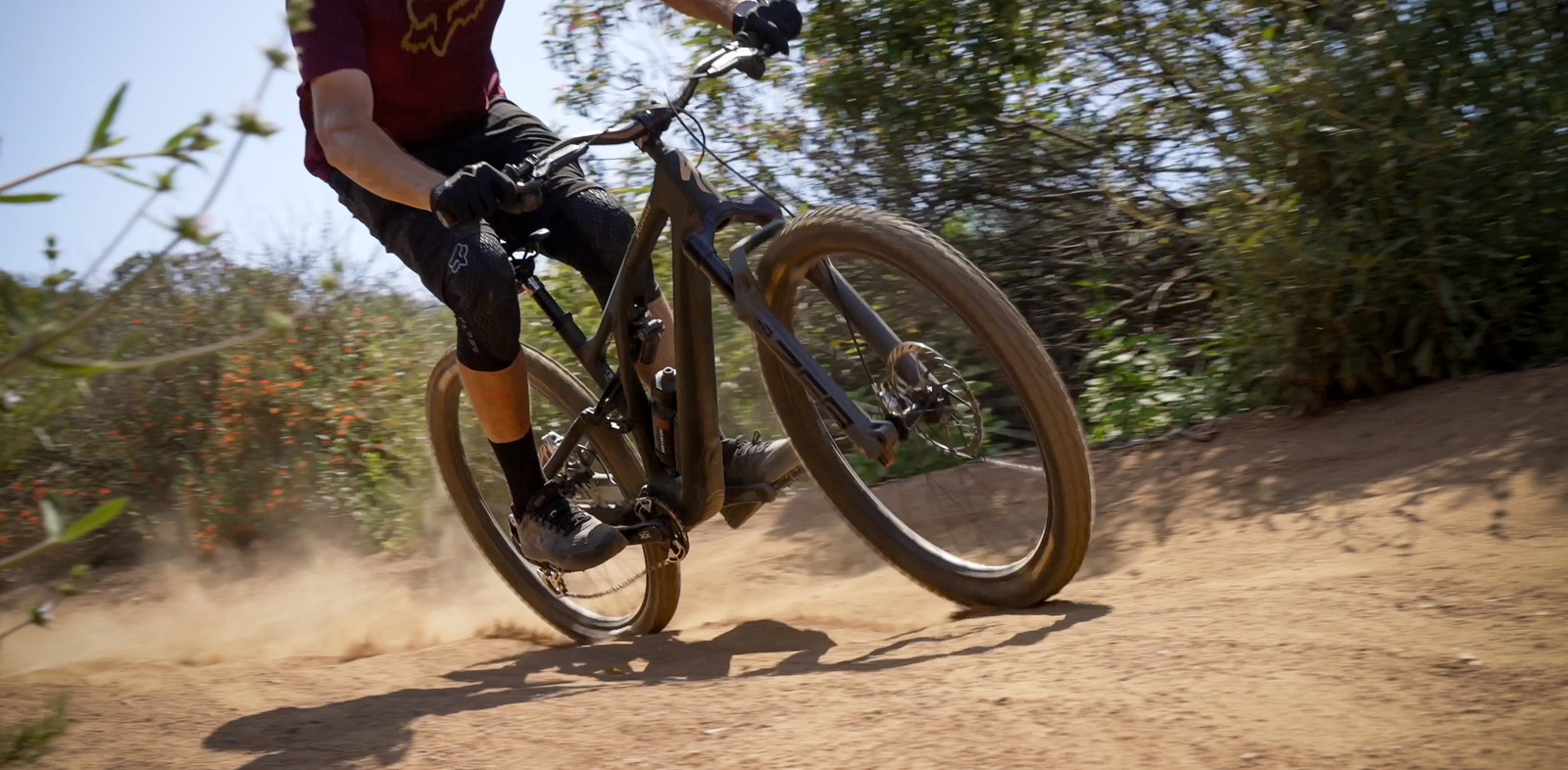
Cornering traction comes down to shoulder knob design, rubber compound, and tire profile. Manufacturers combine these elements in various ways based on their design philosophies. However, surveying the tread layout of our eight test tires, most feature tall and large side knobs with some form of siping to increase knob flex.
How rounded or squared-off a tire becomes when inflated influences how it performs in corners. Tire profile or shape can change depending on rim profile, and individual preference dictates which profile is considered superior. Tires with a round or semi-circle profile usually offer a continuous fade in traction as you lean over further. Tires with a squared-off or flat profile often have an abrupt fall-off of traction once you reach the edge of the side knobs. Some riders say a rounder profile provides added traction at extreme lean angles, while some find this profile makes it difficult to know when the tire will begin to slide. Other riders say that a flat tire profile creates a definite and anticipatable drop in traction once you push past the side knobs, while some find this profile doesn't offer enough bite and grip at intense lean angles. By testing all eight tires on the same wheel, we could compare the performance difference of each tire profile. More on that below within each tire's on-trail impressions.

We tested cornering traction on a section of trail with various types of corners, including tight and steep berms, long flat turns, and tricky banked berms. The mix of turns highlighted how each tire responded to different amounts of rider input and how well the side knob design and compound conformed to the loose, hardpack terrain.
Side Wall Support
The most dynamic aspect of any tire is its casing construction. All tires tested used gravity-focused, multi-layer casings, and some featured a sidewall or bead insert for added support and protection. To test casing construction, we set out to see how each tire responded in high-energy situations, such as rock impacts or pumping through a berm. A well-performing front tire should be able to navigate a rock garden without deflecting or transferring too much force into your hands while remaining puncture-resistant and offering adequate rim protection. It should also be flexible enough to allow the tire to bite into corners but not so flimsy that the tire folds on the rim or burps air out the bead.
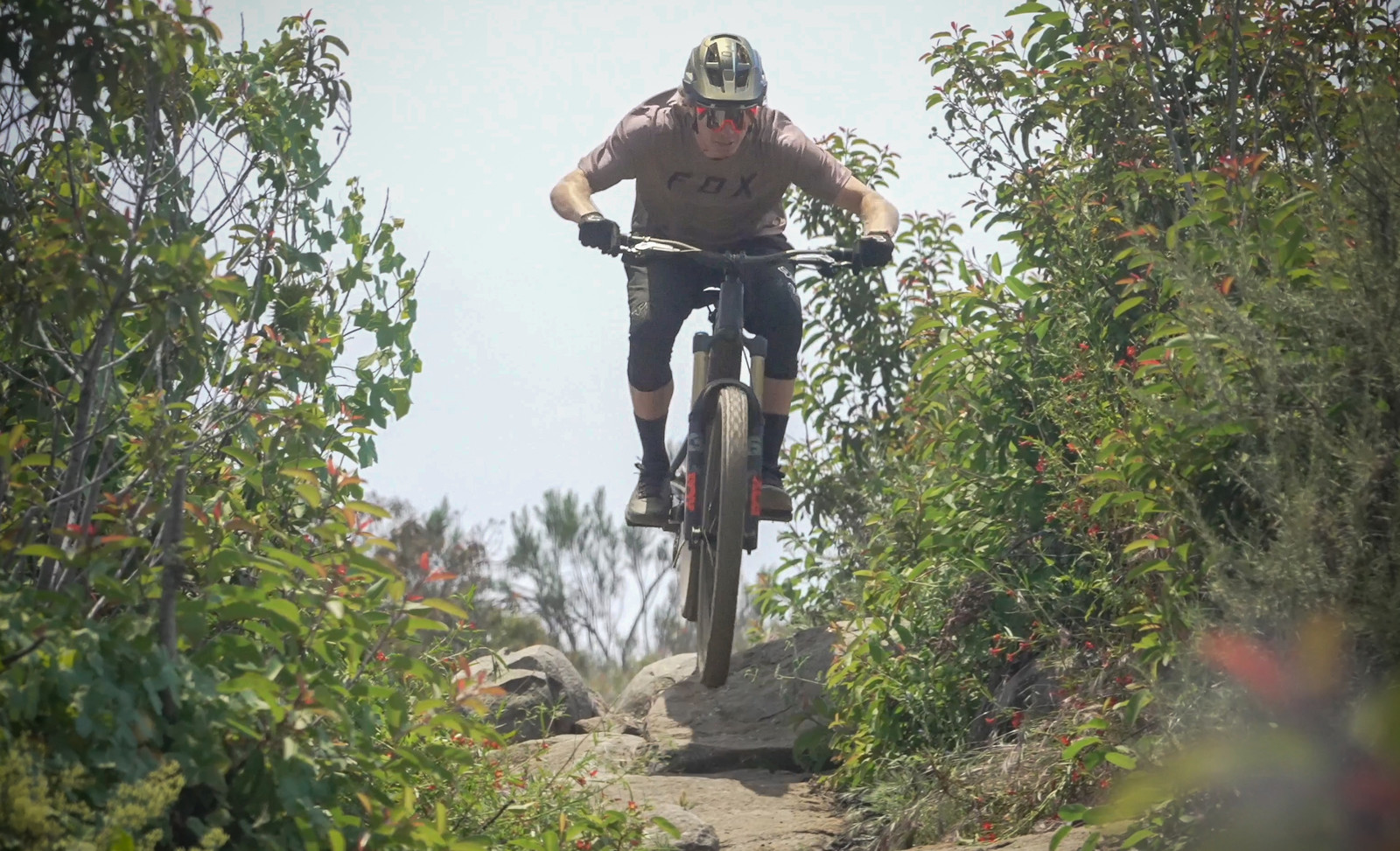
Weight was one factor we did not calculate into the overall performance of each tire. Why? Because we don't think weight should matter much when picking a front tire to go on a 140-160mm travel bike. We would much rather have our front tire provide support and added damping descending than save us 150 grams. For those that are weight conscious, most of the tires tested are available in lighter casing options.
Tread Performance
We define tread performance as how well a tire grips the ground and responds to typical trail features, such as braking bumps, loose rocks, ruts, and off-cambers. How well does a tire perform when not leaned over in corners, and how easy is it to control the front wheel and maintain a line?
The rubber compound, knob shape, siping, and knob spacing all determine how a tire molds and responds to the ground. There were various approaches to tread design present in the group. Some tires used square lugs evenly spaced apart with minimal ramp, while others utilized more knobs placed close together at varying depths. Since our testing conditions were dry, loose, and hardpack, we didn't analyze how well each tread layout cleared dirt. We also didn't focus much on rolling resistance since we were testing tires that prioritized traction and support while descending. All tires tested featured the stickiest rubber available, except for the Michelin Wild AM2 and Schwalbe Magic Marry, which used slightly firmer compounds to balance grip and longevity.
One design element that has become ever-popular with front tires is transition knobs. Made popular by Maxxis' Assegai, transition knobs help provide constant traction as your lean angle fluctuates. They can determine how predictable or vague a tire feels as you initiate turns or ride across uneven sections. Most tires featured some variation of transition knobs except for the Michelin Wild AM2, Schwalbe Magic Mary, and Vittoria Mazza.

Tire Critics
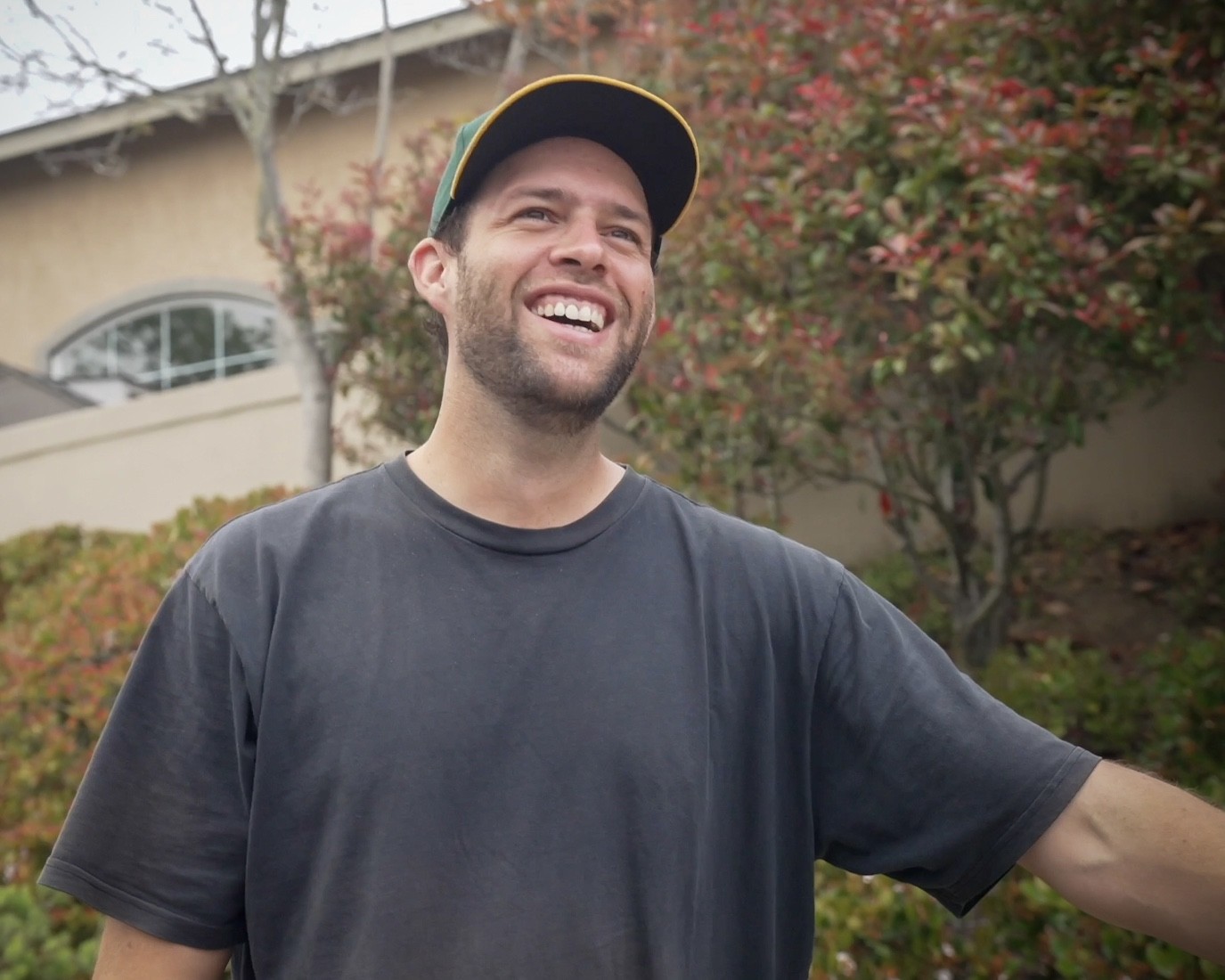 | 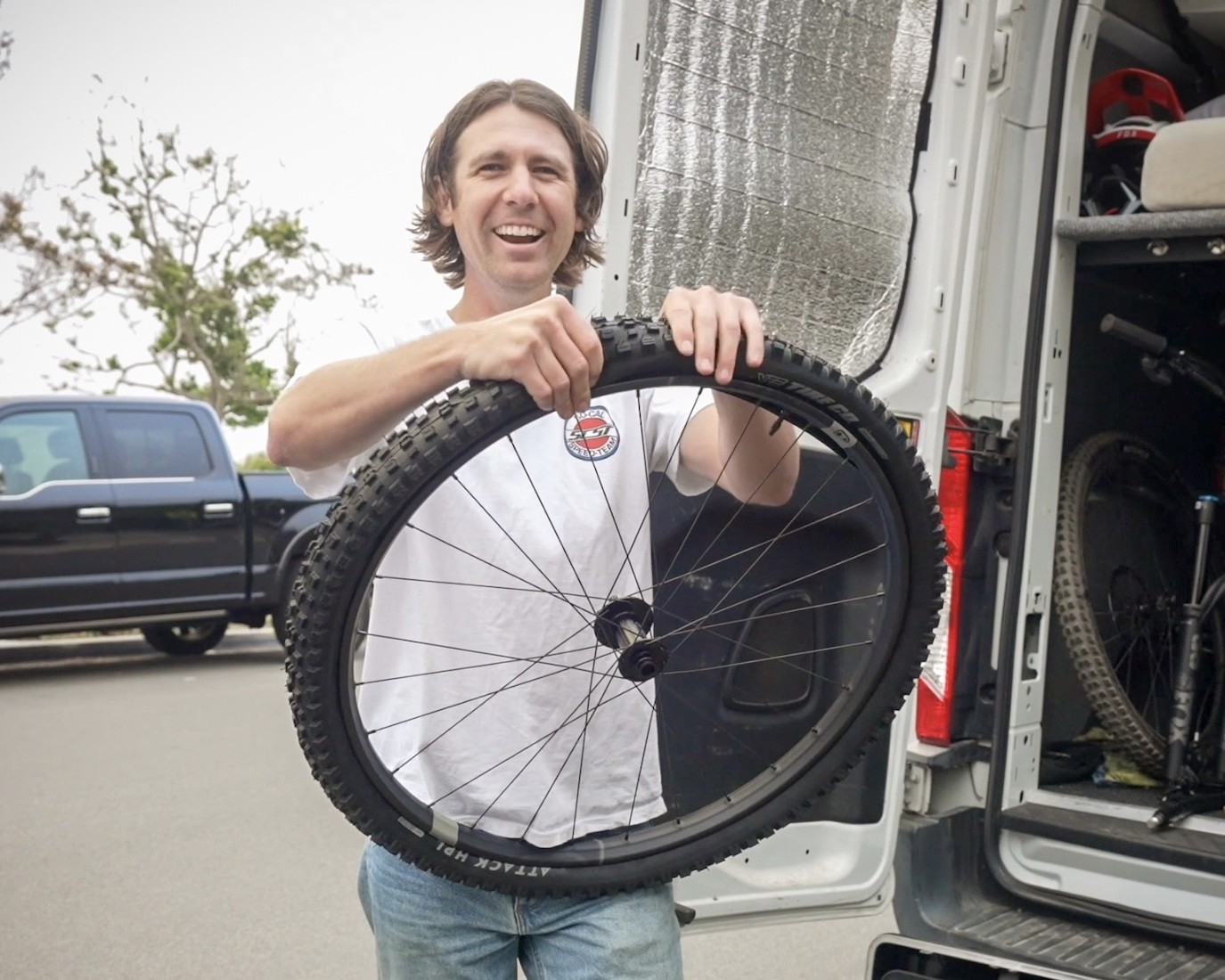 | 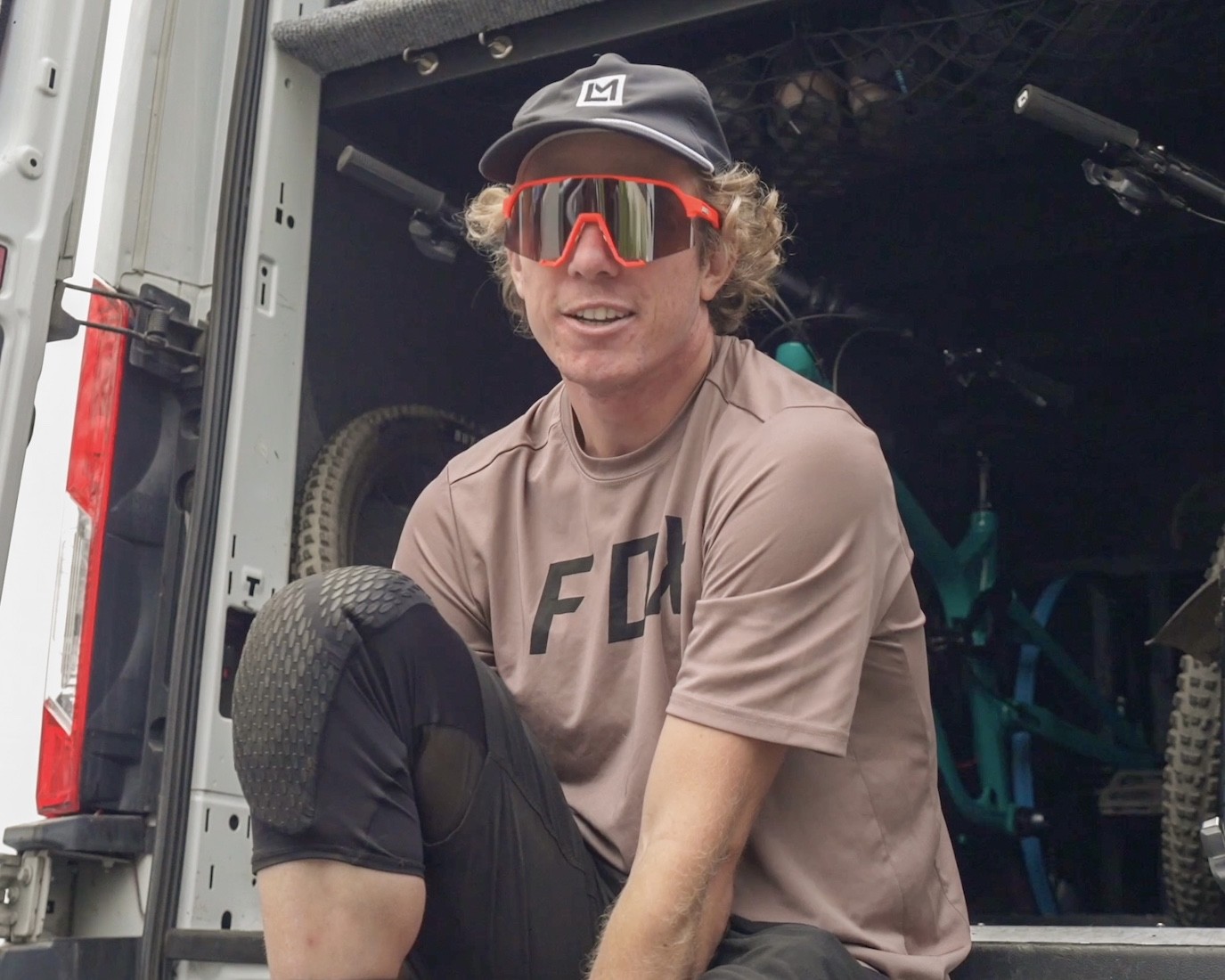 |
|
|
|
Our Picks - Vital Recommended
These are the two standout performers who each earn the "Vital Recommends" badge.
Vee Attack HPL - Jason's Pick!
The Attack HPL is one of Vee's latest gravity models to be developed on the World Cup circuit in recent years. Standing for hard, pack, and loose, the tire is intended for mixed conditions. The tread design uses ramped, medium-depth center knobs evenly spaced apart, with deeper shoulder knobs set in parallel. Closed siping is used throughout, and alternating side knobs have an additional inset step to increase leaning traction.
The Attack HPL comes in three compound and casing options. We tested the mid-weight GXE Core casing and grippiest Full 40 compound in a 2.6-inch width. The enduro-focused casing uses a 1.5-ply construction with an Apex insert and chafer in the bead to save weight without diminishing protection. Derived from Vee's motorsports division, the Full 40 compound uses an ultra-tacky 40a rubber with excellent slow-rebound characteristics.

The Attack HPL was definitely the outlier in the test. Vee has lacked a premium, competitive tire for years, and none of us had ridden their tires before. But that lack of familiarity would prove irrelevant as the Attack quickly rose to the top of our test.

Jason: "I had the easiest time tossing the Attack HPL up front and feeling comfortable going fast, pushing the tire. The tread design offered the most consistent traction across the entire tire, which gave me the confidence to lean hard into turns knowing there was tons of grip on offer at every lean angle. It was also the easiest tire to lock into turns and hold a line, which is no easy task in dry SoCal. The rubber felt super gummy and pliable on the trail, yet I never noticed the knobs rolling or folding when pumping through berms. Through trail chatter and braking bumps, the Attack HPL offered the best damping and tracking of all the tires in the test. Through rocks and impacts, the casing felt supportive and never squirmed or deflected. The Attack HPL was not the tire I would have predicted to be my favorite in the test, but I enjoyed the surprise, and it was a good reminder to step outside my usual preferences and try something new more often."
Tanner: "The Vee Attack HPL was one of the most consistent feeling tires in the test. The tire had a more radial tread pattern with a full spectrum of thoughtfully ramped and siped knobs that held traction well in every type of corner, including slippery off-cambers. The casing was compliant enough not to deflect in rocks and only began to squirm and fold during a few big hits. In my eyes, the Attack HPL rode similarly but better than Maxxis' Assegai, offering a more supportive sidewall that allowed me to push harder than I could push the Assegai, combined with side knobs that offered a more definitive and supportive feel."
Jonathon: "The Attack seemed most similar to my go-to tire, the Assegai. It felt very familiar right off the bat in the flat turns. I did experience a slight shift off-line from a quick change in direction, but the softer side knobs did a great job maintaining traction across off-camber and less supportive surfaces. In a similar situation, the soft side knobs did make for a bit of squirming from high input under a quick change in direction. The sidewall support was great through high-momentum berms and in square edge hits. The tire held a line very well through undulations while turning, even with the small amount of movement from the soft side knobs."
Vittoria Mazza - Tanner & Jonathon's Pick!
The Mazza is Vittoria's mixed terrain-focused enduro tire. It uses stepped center knobs with deep siping in the direction of rotation to maximize rolling speed and traction. The side knobs are staggered and utilize closed and open siping to increase cornering predictability. The inside of the shoulder knobs have more aggressive sipes to allow for flex, while the outside of the knob uses less siping to provide support.
The Mazza is available in two casings and one compound option. We tested the stiffer Enduro casing with Vittoria's 4C compound in a 2.6-inch width. The Enduro casing uses two layers of 120TPI nylon with an added bead insert for pinch flat protection. As the name suggests, the 4C compound uses four compounds throughout the tread. The center and shoulder knobs are made of two graphene compounds each. Harder base compounds stabilize and resist folding, while soft and sticky surface compounds increase grip.
Another tire that we had never ridden, the Mazza proved to be a love/hate tire for our crew.

Jason: "Like the Pirelli Scorpion M, the Mazza was another tire that didn't stand out in any particular way. Still, it did perform well and offered consistent grip and adequate support. Cornering traction was solid. My front end never stepped out or started to tuck, and it was fairly easy to settle into long corners. I tested the Mazza towards the end of the day when I was the most tired, but was riding our test sections the fastest. The tire responded well to hitting turns hard, and I never felt any tire roll or had trouble holding a line well through the rocks. Overall, the Mazza was a tire that didn't ride poorly; it just left me yearning for more overall traction and confidence. It still scored above average and was an easy tire to hop on and ride at a decent pace. I'd be curious to ride the tire in deeper soil or on faster trails to test the support of the side knobs and the bite they can provide."
Tanner: "The performance of the Mazza was a big surprise for me. I had never ridden Vittoria tires and wasn't sure what to expect from a brand I associate with road or XC more than enduro, but I was hooked from the get-go. I felt super comfortable on the Mazza and loved how the tire felt with the channel between the center and side knobs. The very defined side knobs gave me confidence when leaning the bike over and made it easy to tell when the tire was going to break traction or push. The casing also held up super well through the rocks and did not feel overly stiff or supple. A well-balanced tire that tracked our loose, hardpack testing conditions exceptionally well, it's safe to say that I had Vittoria Vision after spending time on the Mazza."
Jonathon: "The Mazza was my favorite tire in the test as it offered the best ratio of compliance to support between casing and tread for our testing conditions. The tread performance was outstanding; despite the channel between the center and side knobs making the tire feel slightly vague on flat corners, I never experienced any falling sensation or knifing in turns. The Mazza provided consistent grip and ground feel through the radius of the tread, and the side knobs felt very supportive and seemed to improve the harder I pushed."
Schwalbe Magic Mary
The Magic Mary has long been Schwalbe's most popular gravity model that performs well in just about any condition. It uses an open tread design with tall, stud-like knobs that dig into topsoil. The center knobs are squared-off with minimal ramp, and a transition knob is used every fourth row. The shoulder knobs are double siped, providing a high degree of flex and grip while cornering.
Schwalbe offers the Magic Mary in seven casings and five compound options. We tested the trail or enduro-focused Super Trail casing that balances weight and durability. It uses three carcass layers under the tread, two on the sidewalls, and a bead-to-bead snakeskin fabric on top. There is also an apex layer for sidewall protection and a foldable Kevlar bead. We paired the Super Trail casing with the Addix Soft compound, the second softest compound Schwalbe offers. There is little information about how Schwable concocts its compounds, but the Addix Soft offers excellent grip with a tad more longevity than their Addix Ultra Soft compound.
 Jason: "The Magic Mary may be my favorite tire of all time, but I know that dry, loose over hardpack conditions don't always cater to its strong suits. The tall, stud-like knobs do far better in softer and deeper soil (like Andorra), where the knobs can dig in and find traction. Still, the Magic Mary offered consistent and confidence-inspiring grip in almost all situations. There was plenty of cornering bite through most berms, and it tracked effortlessly through long flat corners, making it easy to hold a line. The only time I didn't like the tire was in really tight or slap-happy corners because the tall, soft knobs tended to fold over and make the tire feel like it was rolling or understeering. The casing was also softer than most of the other tires, which created a calm ride through the rocks but amplified the tucking sensation created by the knobs when pumping through harsh berms."
Jason: "The Magic Mary may be my favorite tire of all time, but I know that dry, loose over hardpack conditions don't always cater to its strong suits. The tall, stud-like knobs do far better in softer and deeper soil (like Andorra), where the knobs can dig in and find traction. Still, the Magic Mary offered consistent and confidence-inspiring grip in almost all situations. There was plenty of cornering bite through most berms, and it tracked effortlessly through long flat corners, making it easy to hold a line. The only time I didn't like the tire was in really tight or slap-happy corners because the tall, soft knobs tended to fold over and make the tire feel like it was rolling or understeering. The casing was also softer than most of the other tires, which created a calm ride through the rocks but amplified the tucking sensation created by the knobs when pumping through harsh berms."
Tanner: "The Magic Mary is one of those tires I put in the same class as a Maxxis DHF, meaning it's one of those classic tires you can simply trust. It's your good friend from growing up who you can always count on to be there when you need a hand with home repairs or whatever life throws at you. The Magic Mary wasn't the best tire to tackle the conditions we rode in, but it still managed to hold traction well, and I felt like it wanted me to push harder. The tread pattern is closer to a cut spike, but the knobs are siped, so they have quite a bit of flex. It definitely wasn't the fastest rolling tire, but if you're looking for a reliable all-around tire with great braking traction that can be ridden in all conditions, including light mud, the Magic Mary is a solid, safe bet."
Jonathon: "The Magic Mary hooked up super well in flat turns and never wavered off-line. It offered consistent traction through various lean angles and allowed me to really pitch the bike over. The soft knobs and layout of the tread pattern did move some on the hardpack surface of the berms, especially in high-input situations. However, I felt like a bigger issue was the lack of vertical support from the casing rather than the manageable amount of lateral shift from the knobs. I'd love to ride the Magic Mary in a stiffer casing to gain some confidence when riding faster but maintain the epic grip and cornering traction of the Addix Soft compound."
Continental Kryptotal Fr
The Kryptotal Fr is Continental's only front-specific model, designed to excel in mixed terrain by balancing stability, grip, cornering support, and rolling resistance. The tread design features medium-depth blocked knobs spaced tightly together, slightly ramped center knobs, and closed siping throughout.
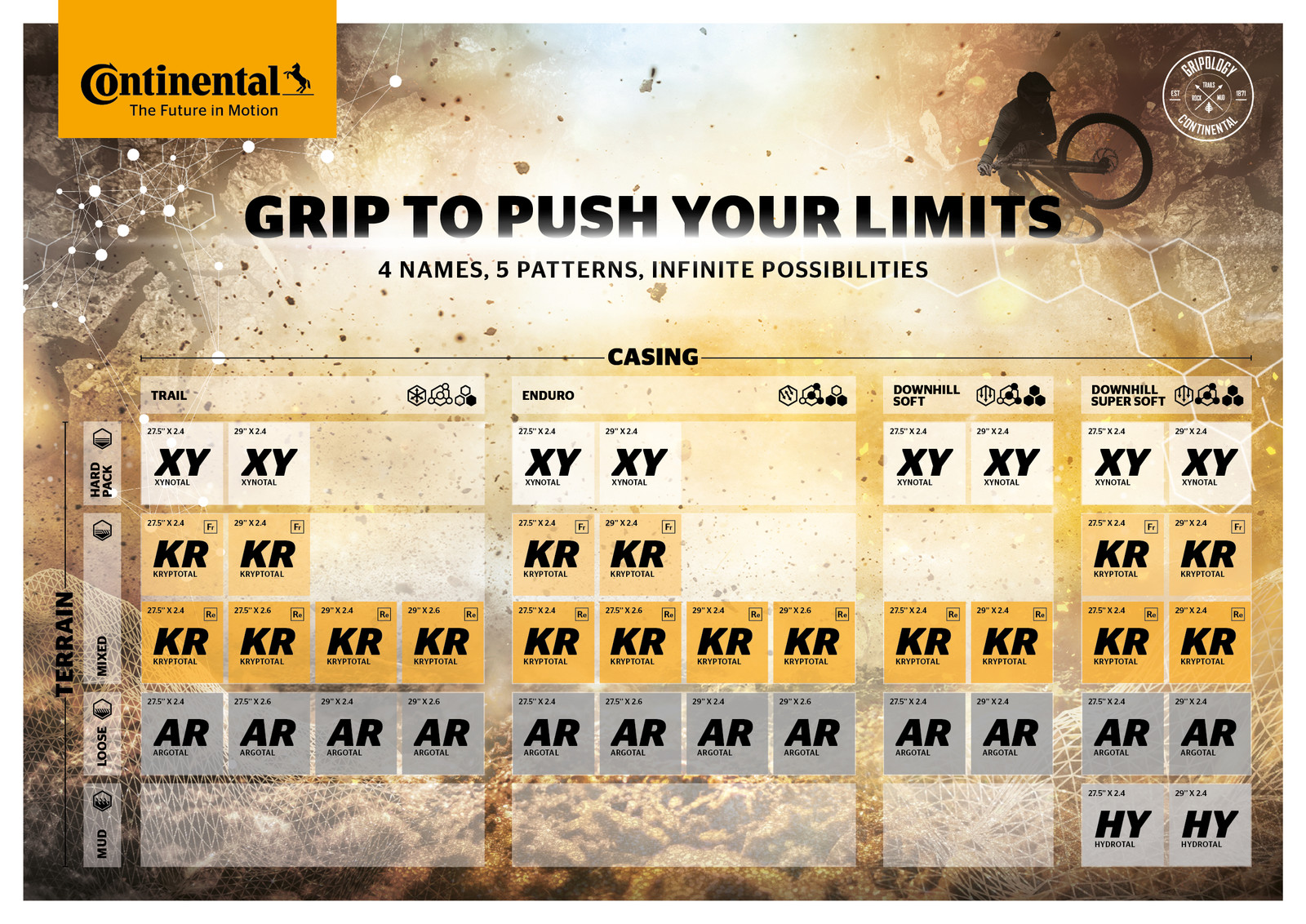
Continental offers the Kryptotal Fr in three casings and three compound options. We tested the burliest DH casing and stickiest, Supersoft compound in a 2.4" width. The DH casing uses four carcass layers in the sidewall, six under the tread, and an apex layer for added pinch flat protection. While this is a lot of layers compared to the other tires, Continental uses thinner 110 TPI fabric. The Supersoft compound uses a harder base compound for each knob with an ultra-grippy rubber on top.
With Continental tires' fast-growing popularity, we were eager to see if the Kyrptotal Fr would live up to the hype.

Jason: "The Kyrptotal Fr offered solid grip with a planted, confidence-inspiring feel in most situations. There was tons of bit and hold in loose, sandy soil matched with stable traction through hardpack off cambers. The tire had a square-off profile and stiffer side knobs, creating a quick fade in traction when leaning over. However, I found this point when the tire would begin sliding easy to predict. When cornering, I did struggle to keep the tire engaged on a consistent lean angle. It often felt like the Kyrptotal wanted to run wide in turns if I wasn't being aggressive and deliberate with my riding and tire placement. I chalk this feeling up to the stiff DH casing we tested and the supportive side knobs that required a lot of force to engage. For how stiff and supportive the casing was in corners, it managed to track through compressions well with minimal deflecting or feedback transferred into my hands."
Tanner: "The first attribute I noticed with the Kryptotal Fr was how wide it looked. Running the tire up front made me want to run into some stuff and really lean into corners. This was the first tire I rode in the test that made me not think about my riding, which was refreshing. I believe this came from the well-defined side knobs that hooked up well in corners, along with the evenly dispersed center knobs that offered consistent grip. The Kryptotal had amazing traction and great sidewall support; however, this did come at the cost of the tire having a heavy ground feel with more rolling resistance than some other tires. It also seemed to like to hold a line but didn’t like to be controlled once that line was set. In a couple of corners, the tire almost rode me off the trail after setting my turning arc."
Jonathon: "I thought the Kryptotal Fr had the best grip on loose over hard-pack flat turns. Very supportive in high momentum turns but challenging to predict through turns with compressions, I was often fighting to hold a line. The tread provided ample traction when pitching into turns at every part of the contact patch. The firm DH casing was great for square-edge impacts but also transferred the most feedback into my hands and seemed to deflect from any change in direction through rocks. I like this tire up front on my downhill bike, but it was too supportive to comfortably hold onto for the front of my 160/150mm trail bike."
Michelin Wild AM2
The Wild AM2 is Michelin's aggressive all-mountain and enduro tire for mixed to soft terrain. The tread design features tall, blocked knobs, staggered side lugs that point inward, and minimal siping throughout. The knob layout reduces rolling resistance while maintaining cornering grip and support.
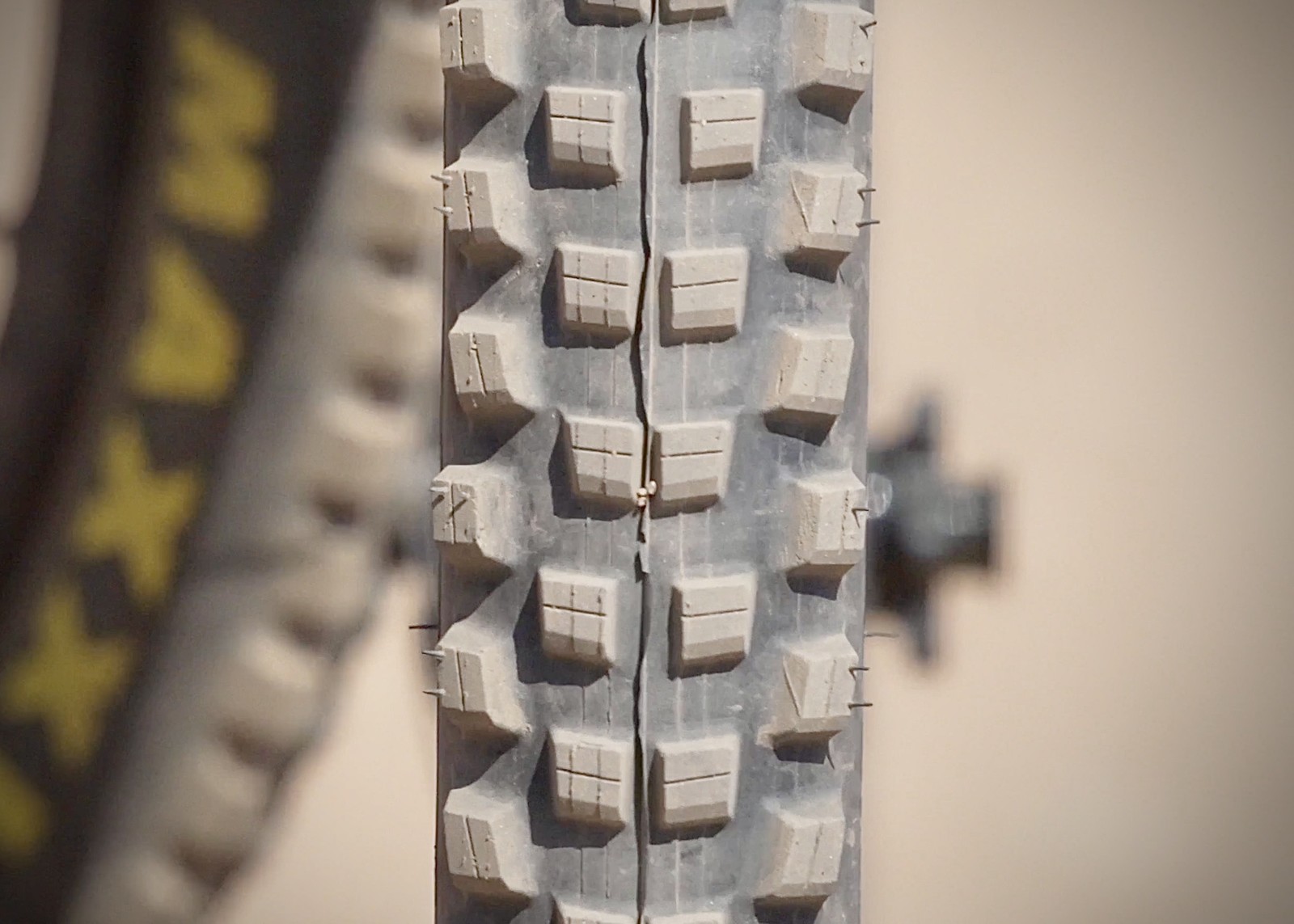
The Wild AM2 is only available in Michelin's Gravity Sheild casing with the Gum-X compound. The Gravity Sheild casing is aimed at enduro riding and uses three 60TPI casing layers. The Gum-X compound lands in the middle of Michelin's compound options and uses a single-compound rubber that offers a mix of rolling efficiency and grip.

Jason: "I struggled to find my groove with the Wild AM2. The deep, aggressive, block-shaped knobs lacked traction in our loose over hard-pack soil. It was only in really sandy or loose sections that the tire felt like it was able to dig in and provide competitive traction. The lack of knob compliance made the tire ride stiff, and I often felt like I was skating on top of the knobs more than I was engaging them with the ground. Once leaning on the side knobs, there was adequate traction, but it was inconsistent, and I would have liked to see additional siping to increase knob flex. The Wild AM2 did feel solid in high-energy compressions and through rocks, offering a sturdy base. Overall, I think this tire requires hard riding to engage the side knobs or would excel most in deeper, looser soil where the knobs can bite into the ground."
Tanner: "The Wild AM2 is a tire that definitely requires being ridden aggressively and can withstand a high degree of rider input. The side knobs offered lots of bite and grip when fully engaged but were a little stiff and struggled to provide traction on hard pack. The channel between the center and side knobs created a hesitation in traction when transferring to the side knobs, and the tire often would skate around and provide an uncertain amount of traction. The casing felt super solid and offered a sweet blend of stiffness and compliance, always remaining manageable through impacts. It also was nice knowing the tire would protect my rim and not roll on the bead. Overall, I think the Wild AM2 would perform better on dry and loose terrain than the hard-pack terrain we tested it on."
Jonathon: "The Wild AM2 was relatively grippy on flatter turns; although it is not the strong point of the tire, it did well with loose dirt and would likely be even better with softer soil that we tested it in. The firmer knobs allowed for a lot of rider input, and I found it held a line really well when tightening up the radius of a turn without any wavering feeling out of the knobs. The traction it provided on rocks was the best in the test, as was the impact protection out of the casing. The sidewall was supportive through compressions with enough give to hold a line as my bike would pitch over."
Maxxis Assegai
It wouldn't be a front tire test without Greg Minnaar's signature, Maxxis Assegai. Featuring one of the most popular and copied tread designs in recent years, the tire pulls aspects from multiple Maxxis models to offer riders exceptional grip and support across the entire tire profile. The center knobs are heavily ramped and fairly shallow to increase rolling speed. A prominent transition knob adds support and feel when leaning over, and the side lugs are deep and squared-off to increase cornering bite.
The Assegai is available in four casings and three compound options. We tested the enduro-focused DoubleDown casing and stickiest, slowest rebounding 3C MaxxGrip compound in a 2.4" width. DoubleDown uses two lightweight 120TPI layers combined with a butyl sidewall insert, making it lighter and more compliant than the DH casing. Maxxis' 3C MaxxGrip compound combines three rubber compounds in key areas: an ultra-softest rubber on top of the knobs, a medium rubber in the core, and a hard rubber at the base of the tread.
Jason: "In the past two years of testing bikes for Vital, I've spent A LOT of time riding Maxxis' Assegai as a front tire. A popular OEM spec for a wide range of bikes, the Assegai is an impressively adaptable and predictable tire. The most user-friendly tire in the test, it offered excellent damping and tracking, combined with plenty of grip even at extreme lean angles. I found it easy to initiate turns and lock in a turning radius. The DoubleDown casing provided the most comfort, deadening a lot of trail chatter. However, the casing did start to squirm and flex when pushing hard, which was surprising considering its weight.
My only complaint with the Assegai, which I've had but reaffirmed during the test, is that with so many knobs engaging the ground, the tire didn't always offer consistent traction. In long or flat corners, it tended to float and feel vague, and I struggled to keep my front tire on the exact line I wanted. Regardless, the Assegai is one the most popular front tire at the moment, and for good reasons. But if this test showed me anything, it's that popularity doesn't always mean you are the best tool for the job, and there are many quality tires gunning for the top spot."
Tanner: "The Maxxis Assegai is the tire I had spent the most time on before the test. An easy tire to ride, I believe anyone can hop on this tire and feel comfortable regardless of ability or terrain. The radial tread pattern and familiar side knob give the tire a confident, safe, and home-like feeling. However, I do think the Assegai struggles in a couple of areas. First, the DoubleDown casing wasn't as strong or supportive as others in the test, and it felt like it began to pack up during consecutive rock hits. I also found it difficult to sense where the edge of traction was in corners. I think this is due to the knob-heavy tread pattern that creates constant traction throughout the tire as you lean over, which doesn't leave any feel indicators as to when you have reached the limit of the side knobs. I'll probably continue to run an Assegai up front occasionally because it's become so familiar, but after this test, my list of potential front tire options has definitely grown."
Jonathon: "The Assegai has been my go-to tire because of its consistent traction when leaning over. It impressively seems to find traction damn near everywhere. During this test, holding lines in flat turns was intuitive, and I never had my front wheel push or knife. I noticed the softer knobs of the tread would waver in berms slightly through compressions when turning. The lack of a channel between the center tread and side knobs created a consistent feel in each test section we rode. Where the DoubleDown casing fell short was handling impacts of square edge hits; the sidewall compressed easily, and I experienced the most rim impacts (or audible 'dings') while testing the Assegai. This made charging into rocks difficult, not knowing what the tire would do or what line I would end up on. Overall, the Assegai's tread design and cornering traction were as exceptional as expected, but I was surprised the enduro-focused casing lacked adequate support and rim protection."
Pirelli Scorpion Enduro M
Pirelli defines their models by terrain, and the Enduro M is designed for mixed terrain. The tire features consistently spaced, large knobs that grow in depth as you move outward. The shoulder knobs are positioned in an alternating pattern and have a single, deep sipe. There is also a transition knob next to every other center knob pair to lessen dead space in the tread.
The Scorpion is only offered in Pirelli's SmartGrip gravity compound, and riders can choose between their HardWALL or ProWALL casing. SmartGrip is Pirelli's softest compound formulated to balance grip, tear resistance, and stability. We tested the HardWALL casing, intended for trail and enduro riding, that features bead-to-bead protection plus an insert of hard rubber above the bead to prevent pinch flats.
Developed and proven over the past few seasons by top World Cup racers, we had high expectations for the Scorpion coming into the test!
 Jason: "The Enduro M was a bit underwhelming as I had high expectations and excitement to ride the tire, but its on-trail performance was average. It offered good traction and held a line well in most long or flat corners, but once I was fully leaning on the side knobs, it felt inconsistent and vague. The knobs are large, and they didn't always want to mold to the ground. The good, though, was that it had no issues holding up to some hard-charging riding and responded well when I was really pushing it. The casing felt stiff and solid through the rocks but never wavered off line and took the edge off square edge hits. Overall, the Scorpion felt like a tire that required some aggressive riding to maximize its potential and would fare better in looser conditions where the knobs can bite into the ground more."
Jason: "The Enduro M was a bit underwhelming as I had high expectations and excitement to ride the tire, but its on-trail performance was average. It offered good traction and held a line well in most long or flat corners, but once I was fully leaning on the side knobs, it felt inconsistent and vague. The knobs are large, and they didn't always want to mold to the ground. The good, though, was that it had no issues holding up to some hard-charging riding and responded well when I was really pushing it. The casing felt stiff and solid through the rocks but never wavered off line and took the edge off square edge hits. Overall, the Scorpion felt like a tire that required some aggressive riding to maximize its potential and would fare better in looser conditions where the knobs can bite into the ground more."
Tanner: "The Pirelli Scorpion was an exciting tire to ride. We all know Pirelli from road racing, but I haven't seen or heard much from them in the off-road or mountain bike realm. From the start, I noticed the tire felt like it was grabbing at the ground, which gave it a heavy or slow feel. The tire hooked up well on the loose over hardpack conditions; however, it was very difficult to find the point where it would break traction, and this point came sooner than I would have liked. When I leaned over in flat corners, I noticed myself wavering or feeling uneasy about whether the tire would hold traction or not. The off-set side knobs did not like to be pushed hard, nor did they inspire confidence in my riding style. The casing, however, felt tough and held a line well through the rocks."
Jonathon: "The Scorpion M was the only tire I experienced my front wheel tucking in corners, and cornering traction overall felt slightly vague. The wide spacing between knobs caused my front wheel to waver off-line through berms when really pushing it. I also felt the tire squirm a bit through the rocks, which was likely more related to the tread than the casing; sidewall support was good but not the most confidence-inspiring out of the bunch."
WTB Vigilante
The Vigilante is WTB's premier, aggressive tire. The tread pattern features square-lugged center knobs spaced relatively far apart with minimal ramp. All knobs are deep to dig into loose soil, and the side knobs are staggered. The side knobs also have enclosed sipes to improve durability and cornering support while remaining flexible to conform to the ground.
The Vigilante is available in two casings and three compound options. We tested the most protective Tough Casing and softest High Grip compound in a 2.4-inch width. The casing uses two bead-to-bead layers for optimal sidewall support and puncture protection. The High-Grip compound offers soft yet supportive knobs that rebound slowly to provide maximum traction on loose, rocky terrain. All Vigilante models use WTB's TRITEC Compound construction that places three rubber compounds in specific areas of the tire. Like Maxxis' 3C compound, TRITEC places the highest durometer rubber at the foundation of the knobs to provide support. A medium durometer makes up the middle of the knobs for durability, and finally, a slow-rebounding compound is used on the surface of the side knobs for traction.
With its deep lugs that looked better suited for loose soil or mud, we all wondered how the Vigilante would feel once we placed its knobs on our dry, loose terrain.
 Jason: "The Vigilante was the second-highest overall scoring tire in the test for me. What stood out about the tire was how easy it was to ride hard and fast with confidence. There was a predictable drop-off in traction when leaning over that made it easy to ride the limit of the tire. Traction did fade away all at once, but I knew when that moment was coming. And up until that moment, it offered excellent cornering grip and support. The knobs are deep and lug-shaped but conformed well to our hardpack conditions. I always felt like I was riding in the knob, and they were engaging with the ground. The Vigilante did have a familiar feel to my beloved Magic Mary but with less knob flex and more support in corners. It never felt like the knobs were folding over when pushing a lot of energy through the tire. I think the difference in side knob siping between the Vigilante and Magic Mary is to thank (or blame) for the difference in cornering support and feel. Lastly, the sidewall support was spot-on for what I like on my trail bike— supportive, good damping characteristics through trail chatter, and no tire roll in corners."
Jason: "The Vigilante was the second-highest overall scoring tire in the test for me. What stood out about the tire was how easy it was to ride hard and fast with confidence. There was a predictable drop-off in traction when leaning over that made it easy to ride the limit of the tire. Traction did fade away all at once, but I knew when that moment was coming. And up until that moment, it offered excellent cornering grip and support. The knobs are deep and lug-shaped but conformed well to our hardpack conditions. I always felt like I was riding in the knob, and they were engaging with the ground. The Vigilante did have a familiar feel to my beloved Magic Mary but with less knob flex and more support in corners. It never felt like the knobs were folding over when pushing a lot of energy through the tire. I think the difference in side knob siping between the Vigilante and Magic Mary is to thank (or blame) for the difference in cornering support and feel. Lastly, the sidewall support was spot-on for what I like on my trail bike— supportive, good damping characteristics through trail chatter, and no tire roll in corners."
Tanner: "I was excited to try the Vigilante because it has been around for a long time, and I had never managed to ride it. I was impressed that even with the tall, spaced-out knobs, the tread pattern actually flattened out a lot while riding and did not feel like I was riding on the center knobs, which is what I was expecting by looking at it. Unfortunately, with a more forward riding style, I found the spacing of the knobs to be detrimental to my riding because they folded under pressure, causing a loss of traction and stability. I struggled to feel the limits of the tire, and the side knobs flexed and tucked under too easily in turns. I also did not like how this tire felt through rocks due to the spacing of the knobs and the lack of surface area on the ground. The sidewall offered adequate support to ride with some aggression but wasn't stiff enough to give me the confidence to hit turns or blast into the rock garden as I could with some of the other tires. I think the Vigilante could be really good on steep trails with roots and loam, plus an insert to give it some lateral stiffness."
Jonathon: "The Vigilante was surprisingly good for the terrain we tested; I felt comfortable leaning into turns because there were enough transition knobs to eliminate any falling or drifting feeling. I could hold a line just fine through flat, hardpack turns, but I'd imagine the benefits of the tread pattern would be most noticeable in deeper dirt or wet conditions. The spaced-out lugs wiggled a bit through berms which I anticipated out of the tread design but never wavered off-line. Sidewall support was slightly softer but adequate and handled square-edge impacts well."
Average Overall Score Per Section
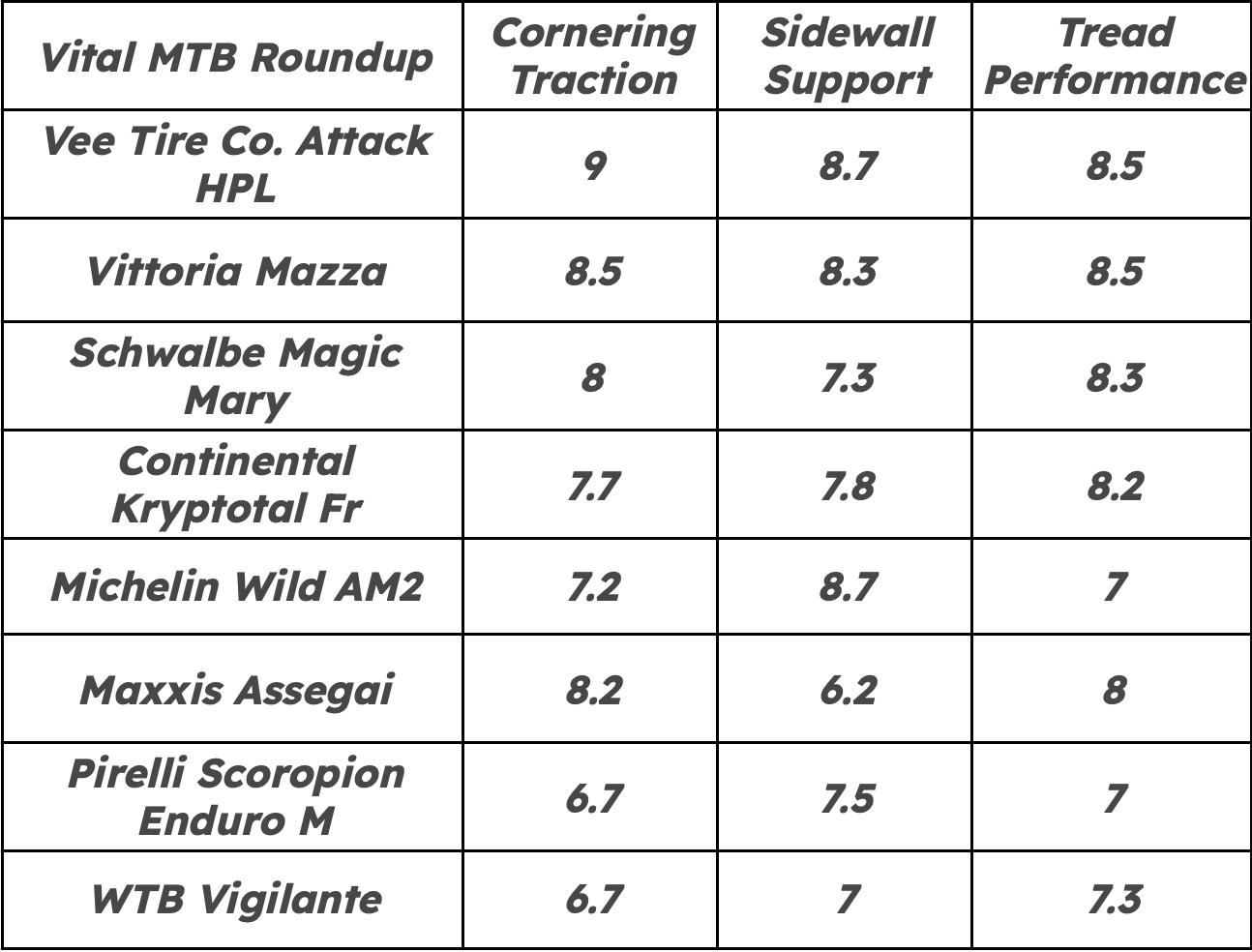
Let us know which tire you'd pick, what performance factors you prioritize in a front tire, and your experience with any of the tires tested!



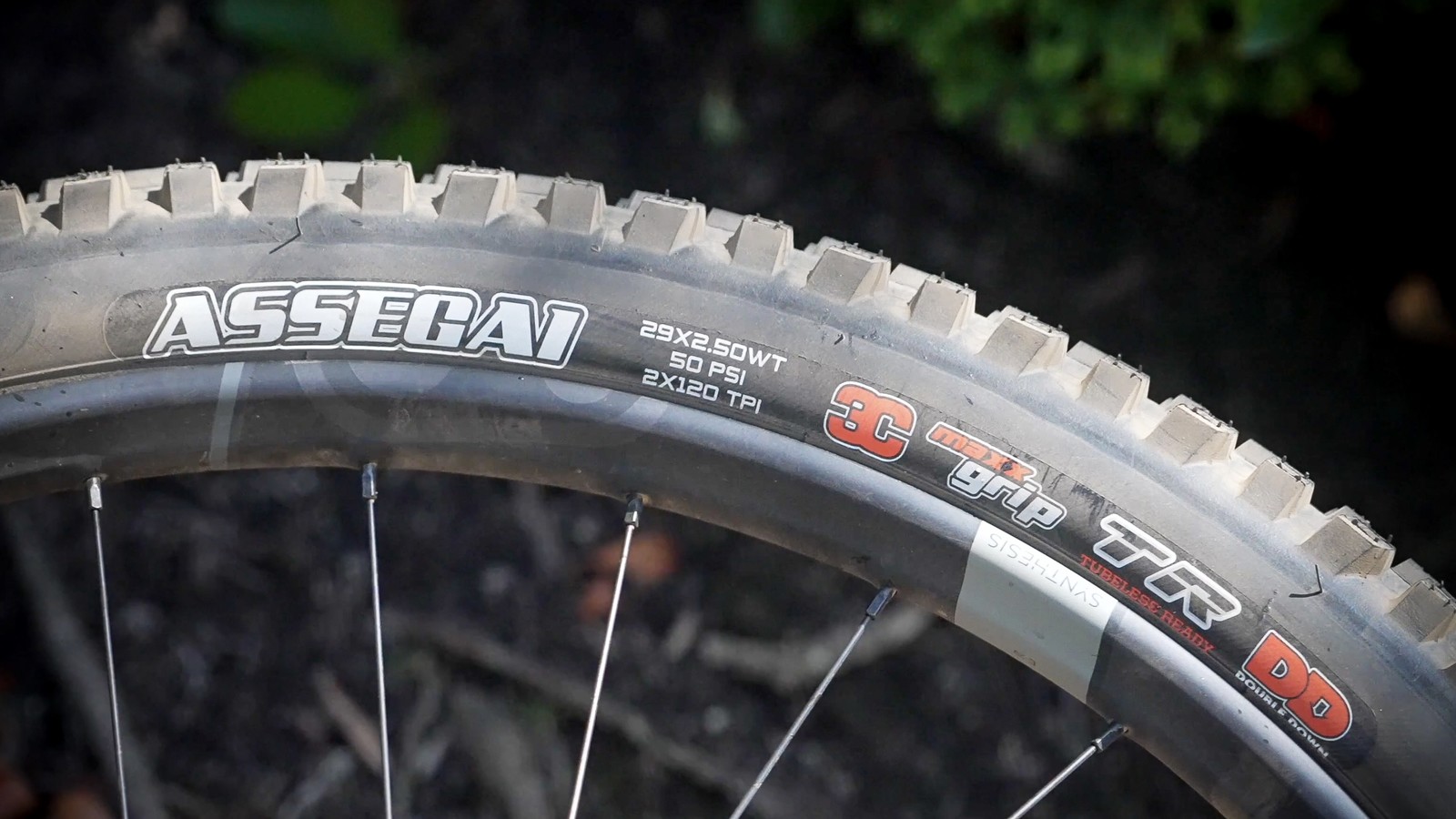
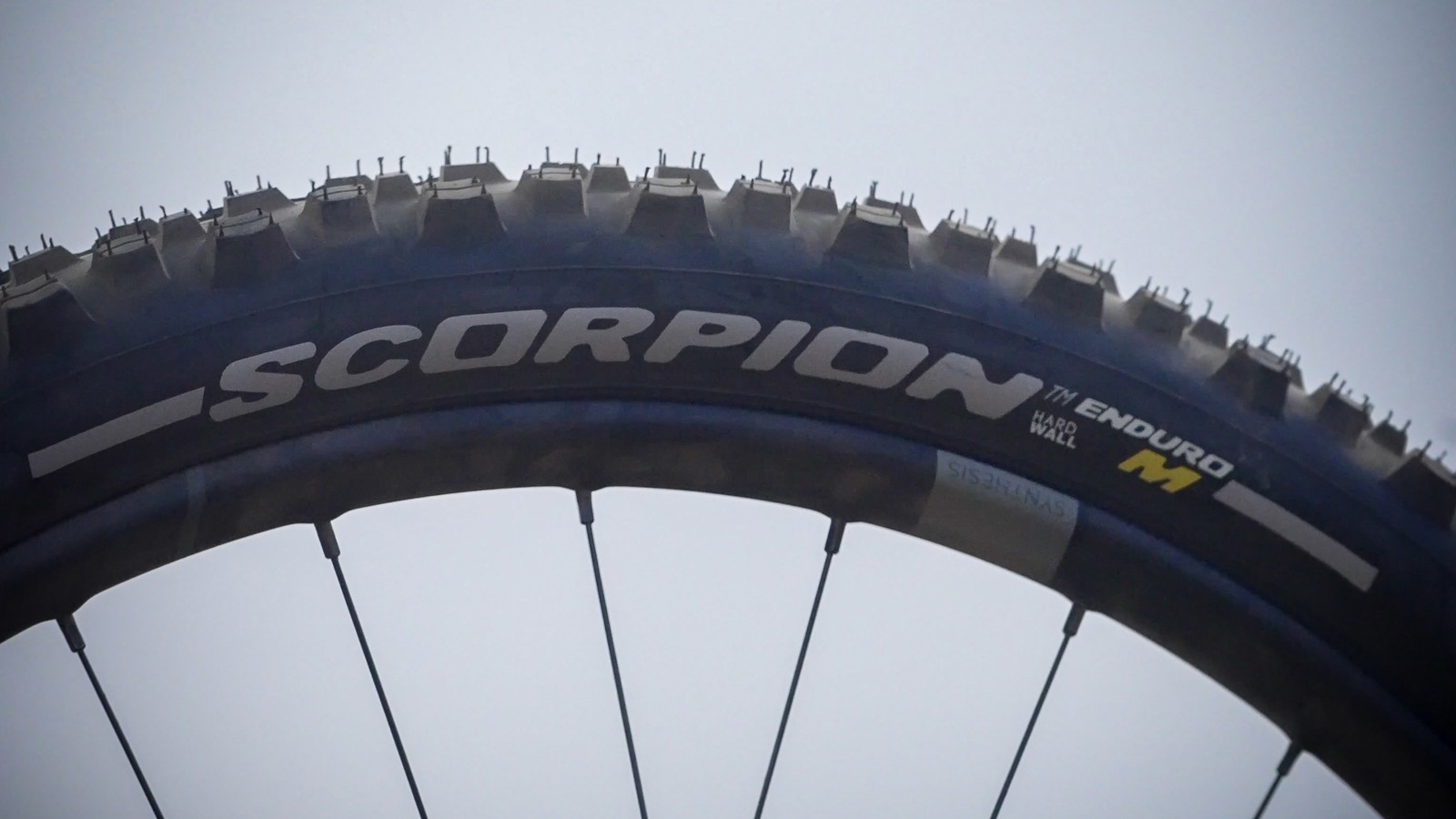
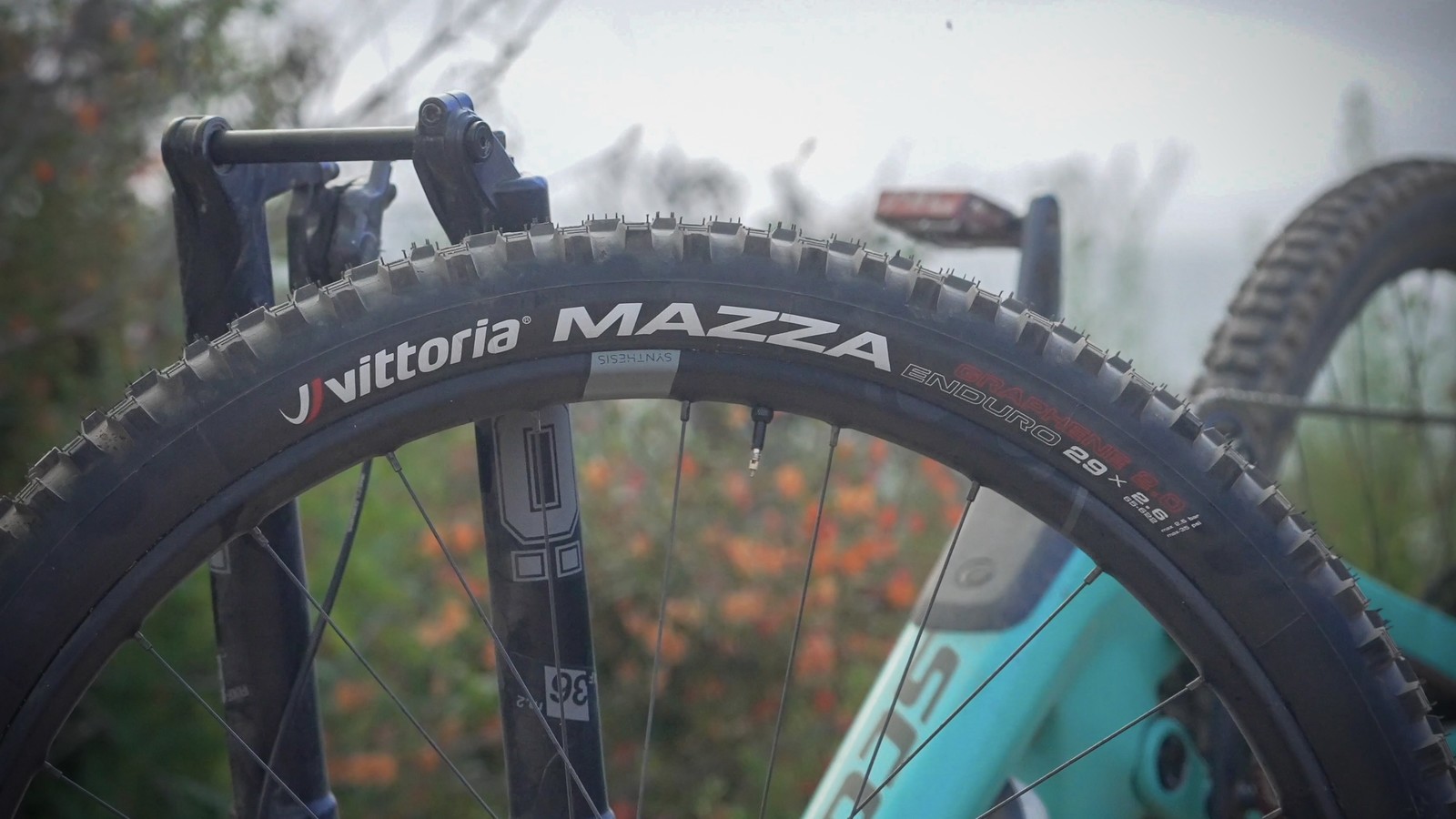
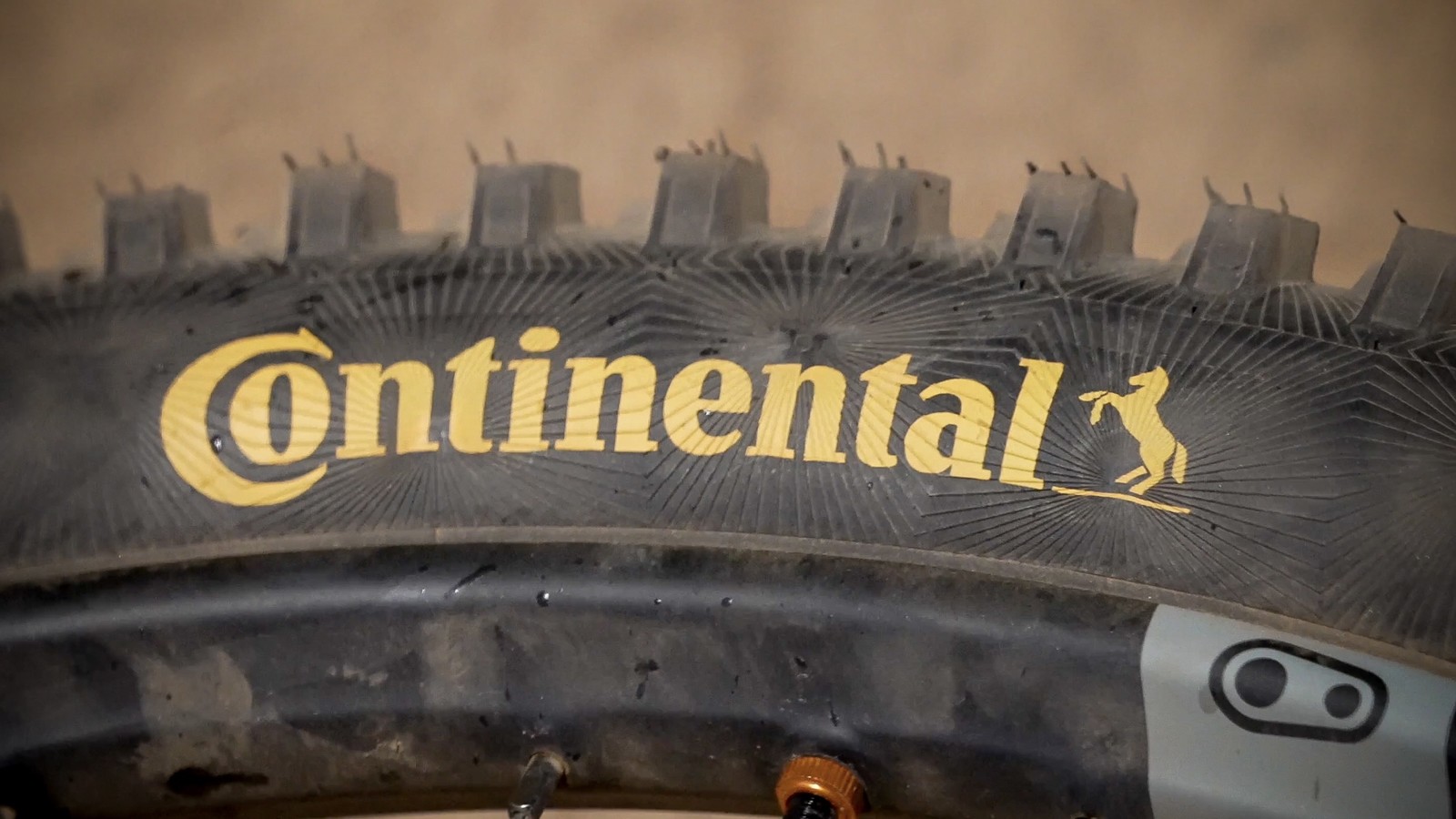
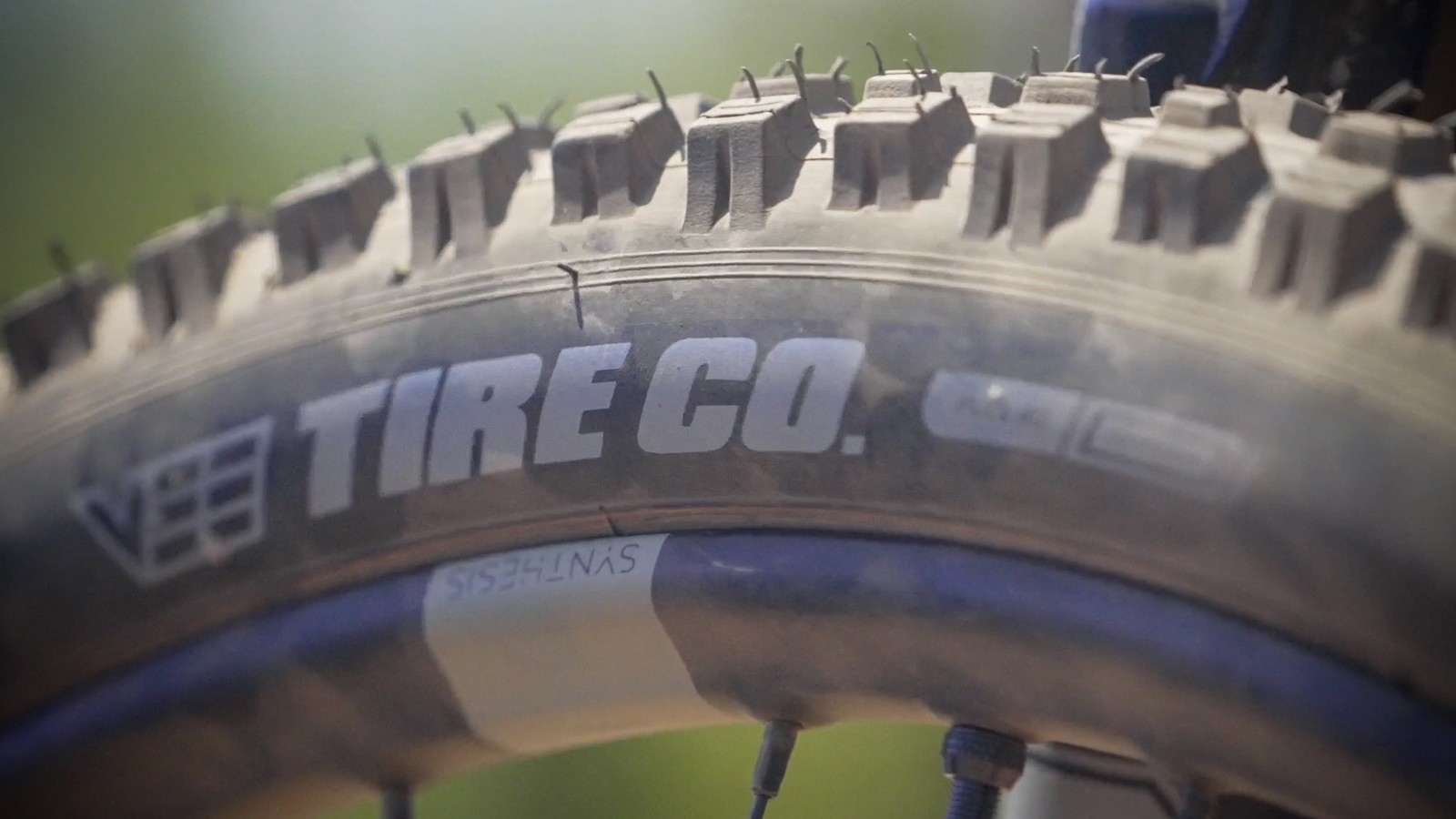
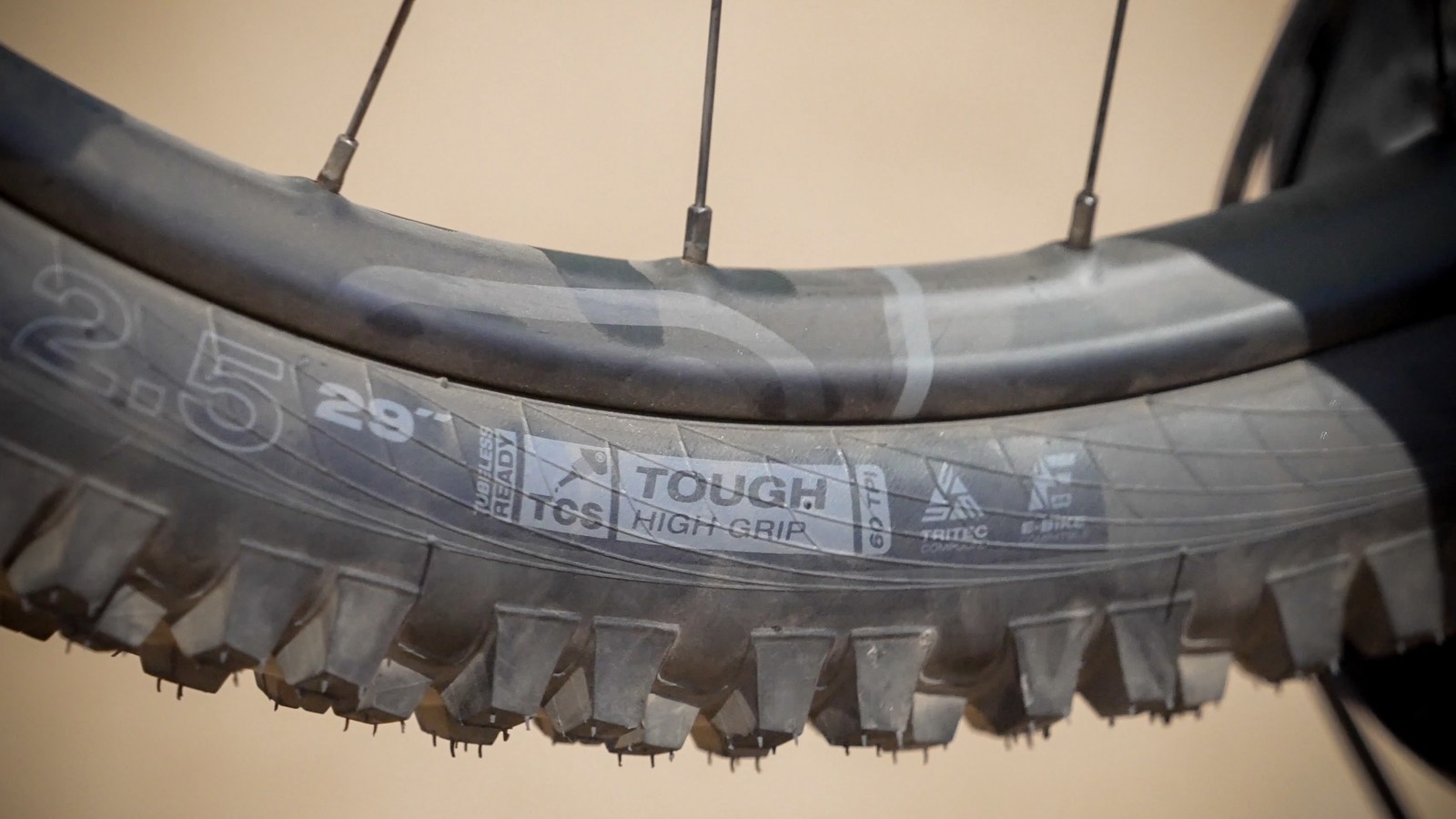


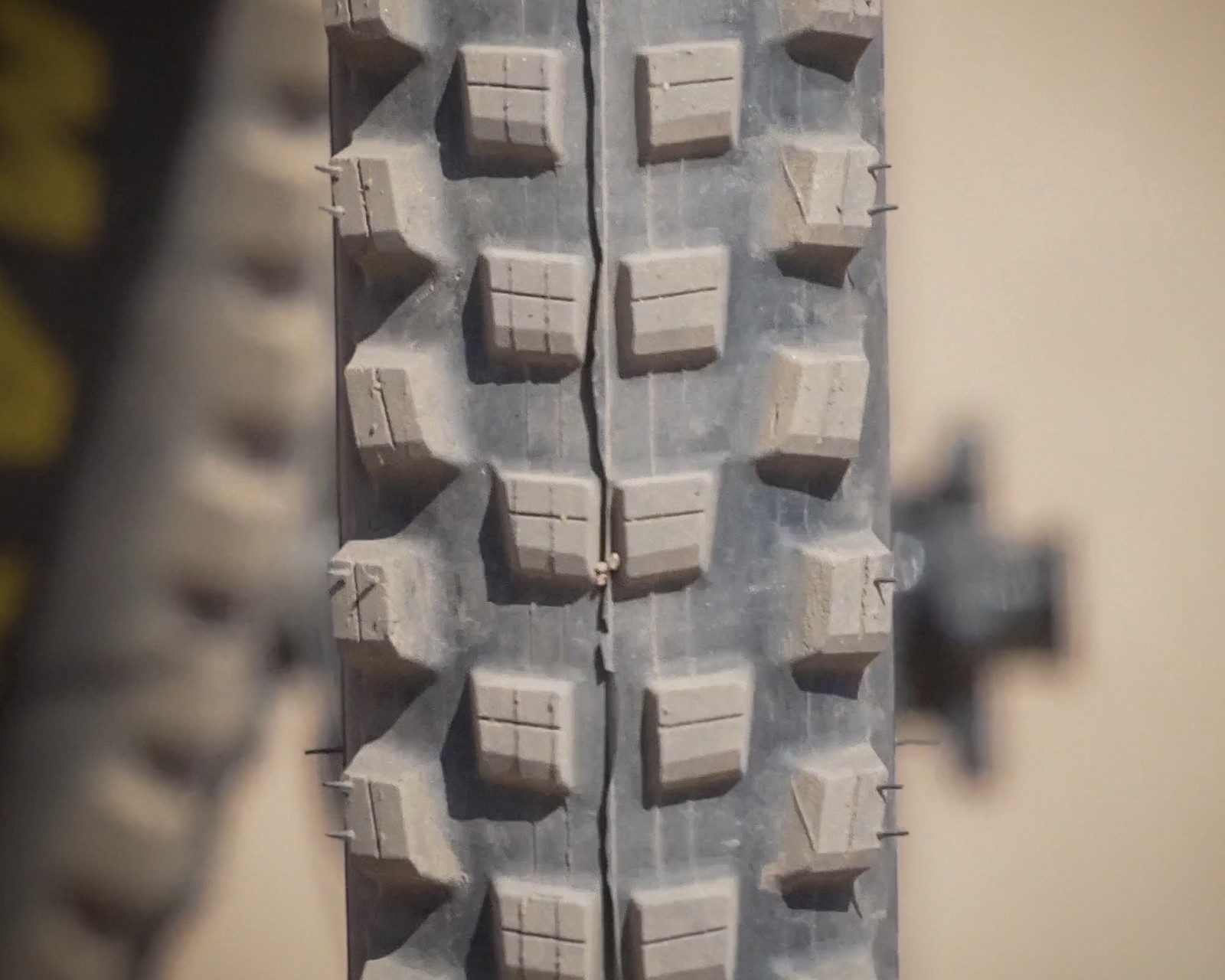



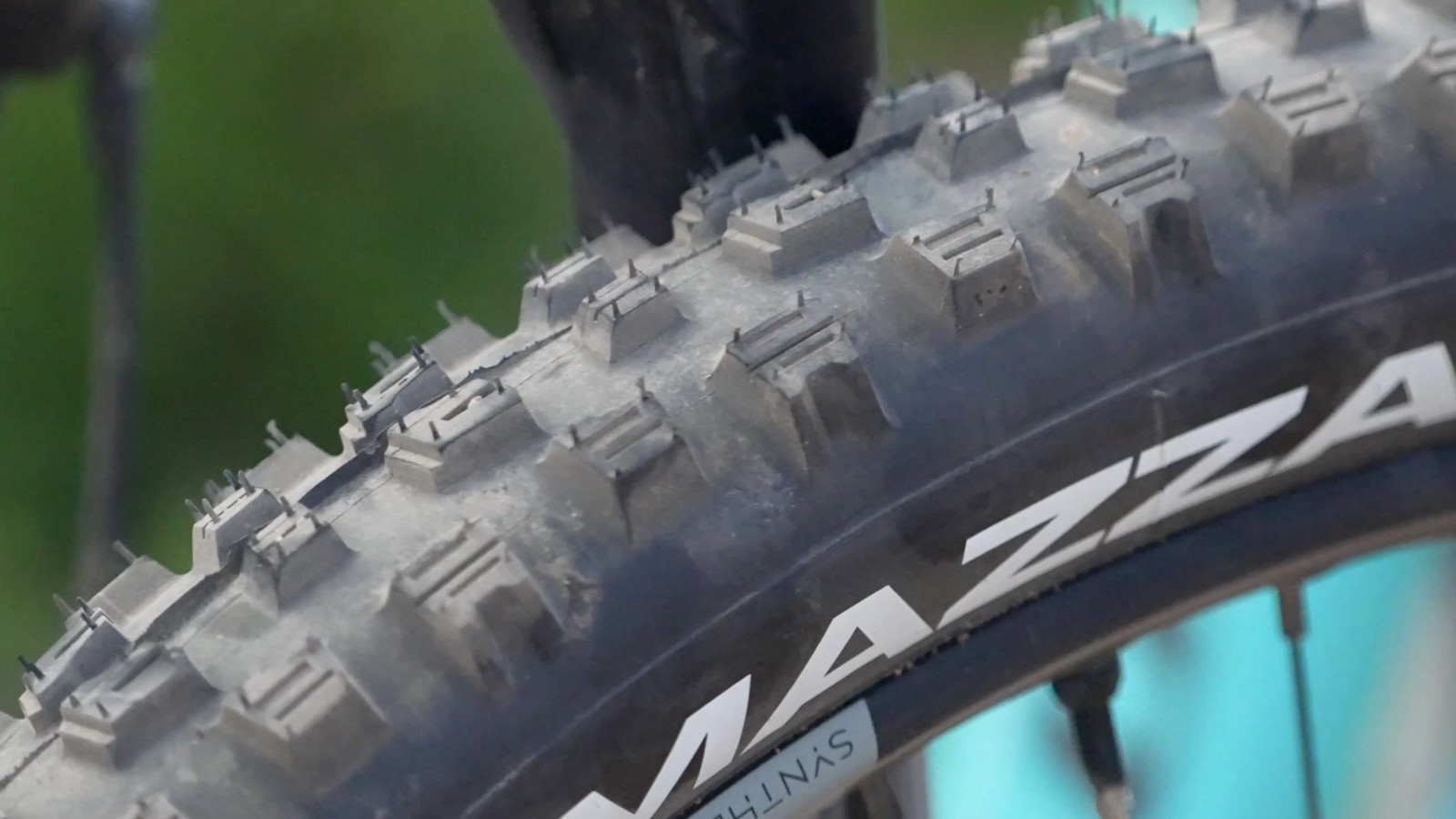

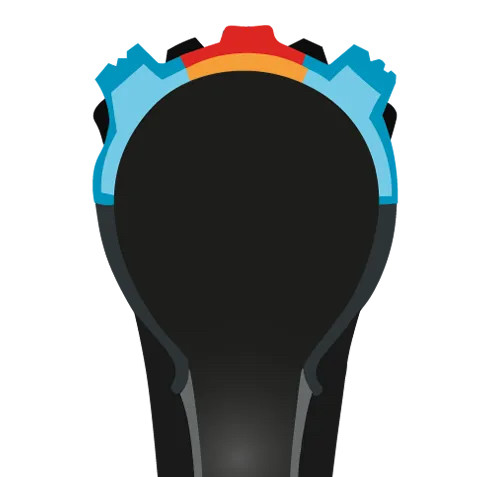
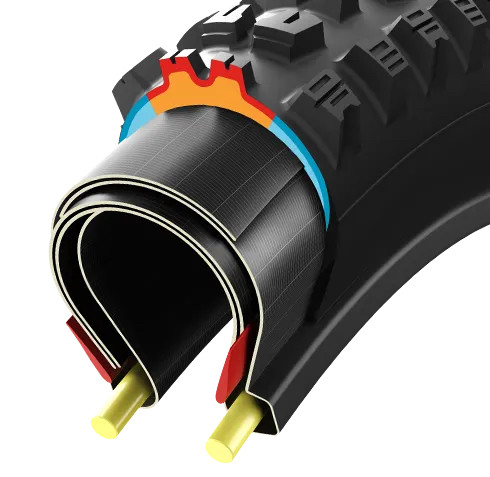
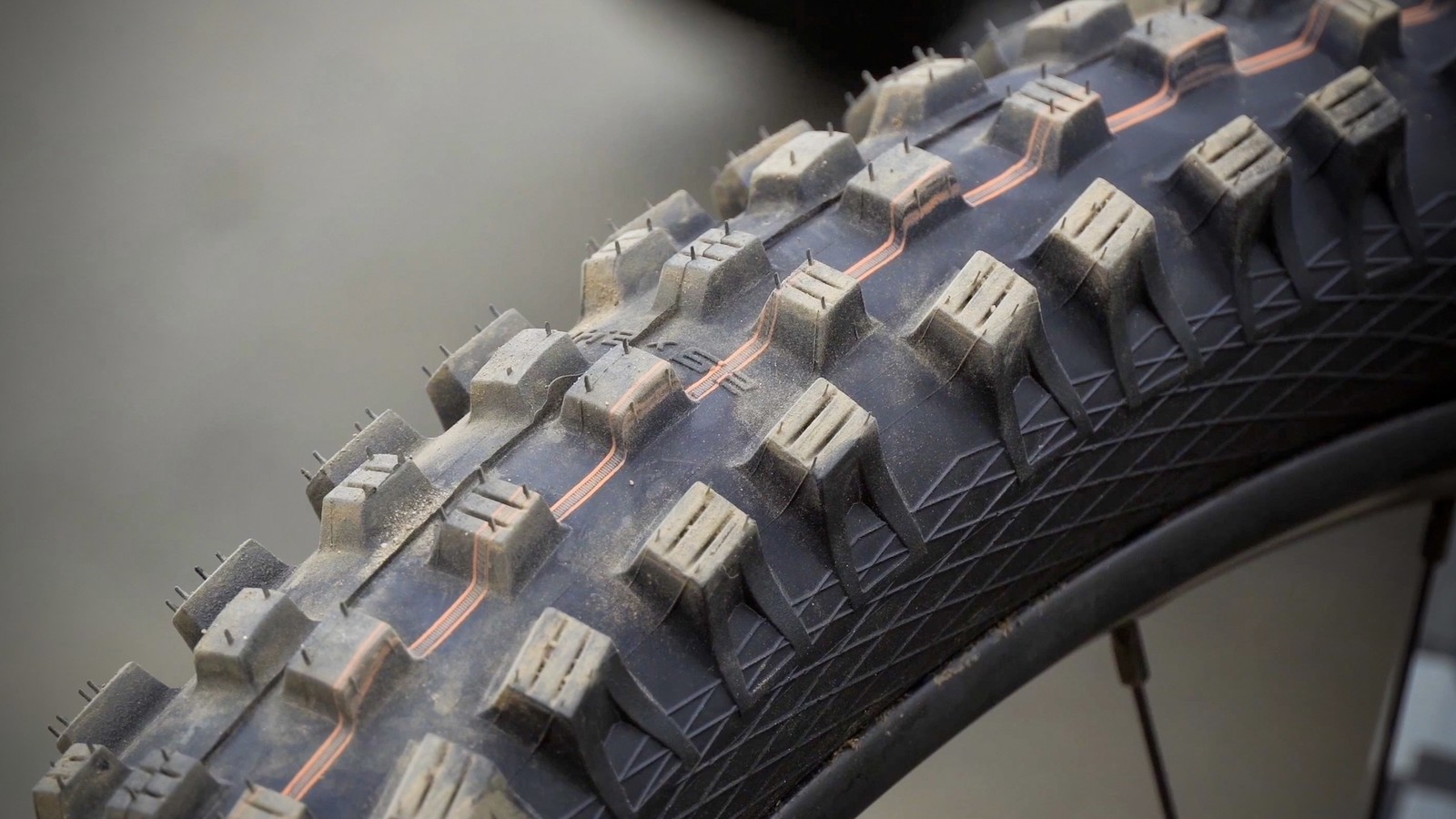

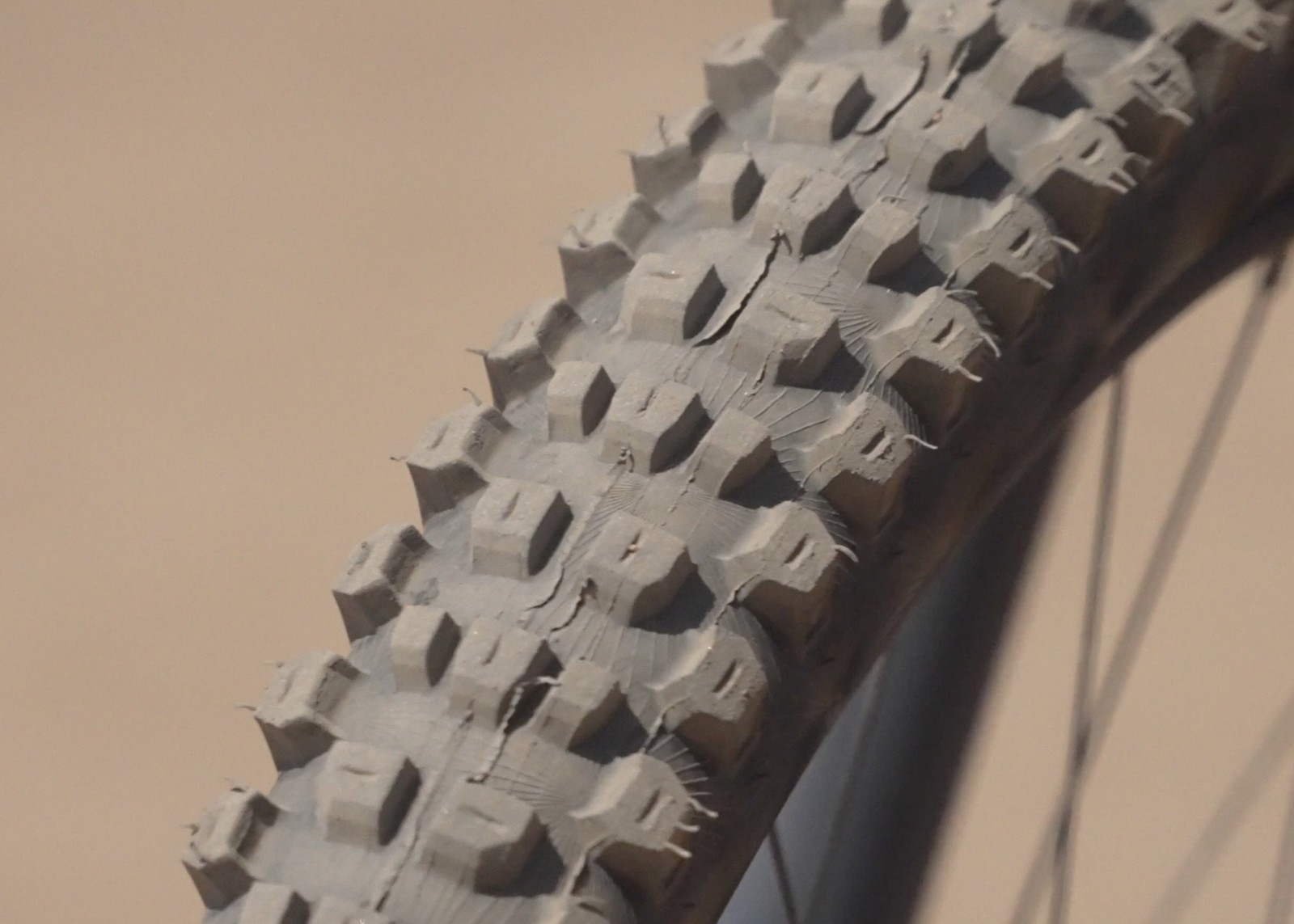
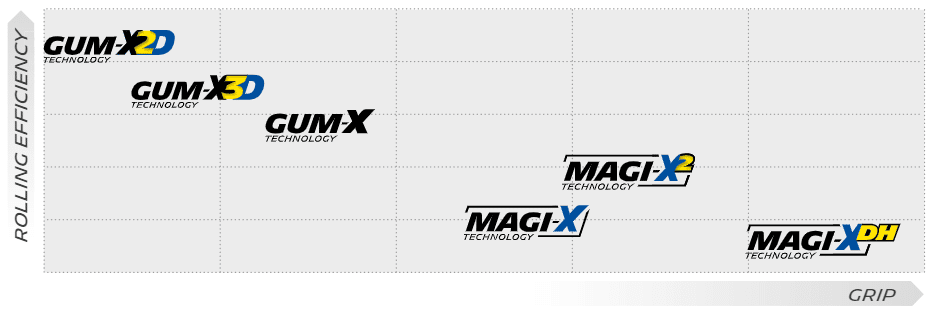
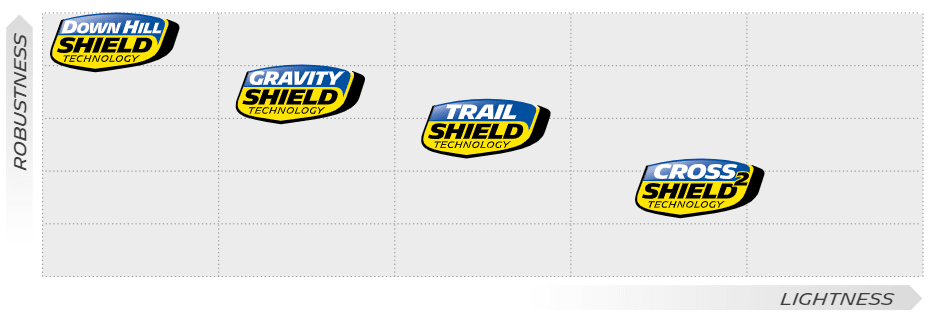

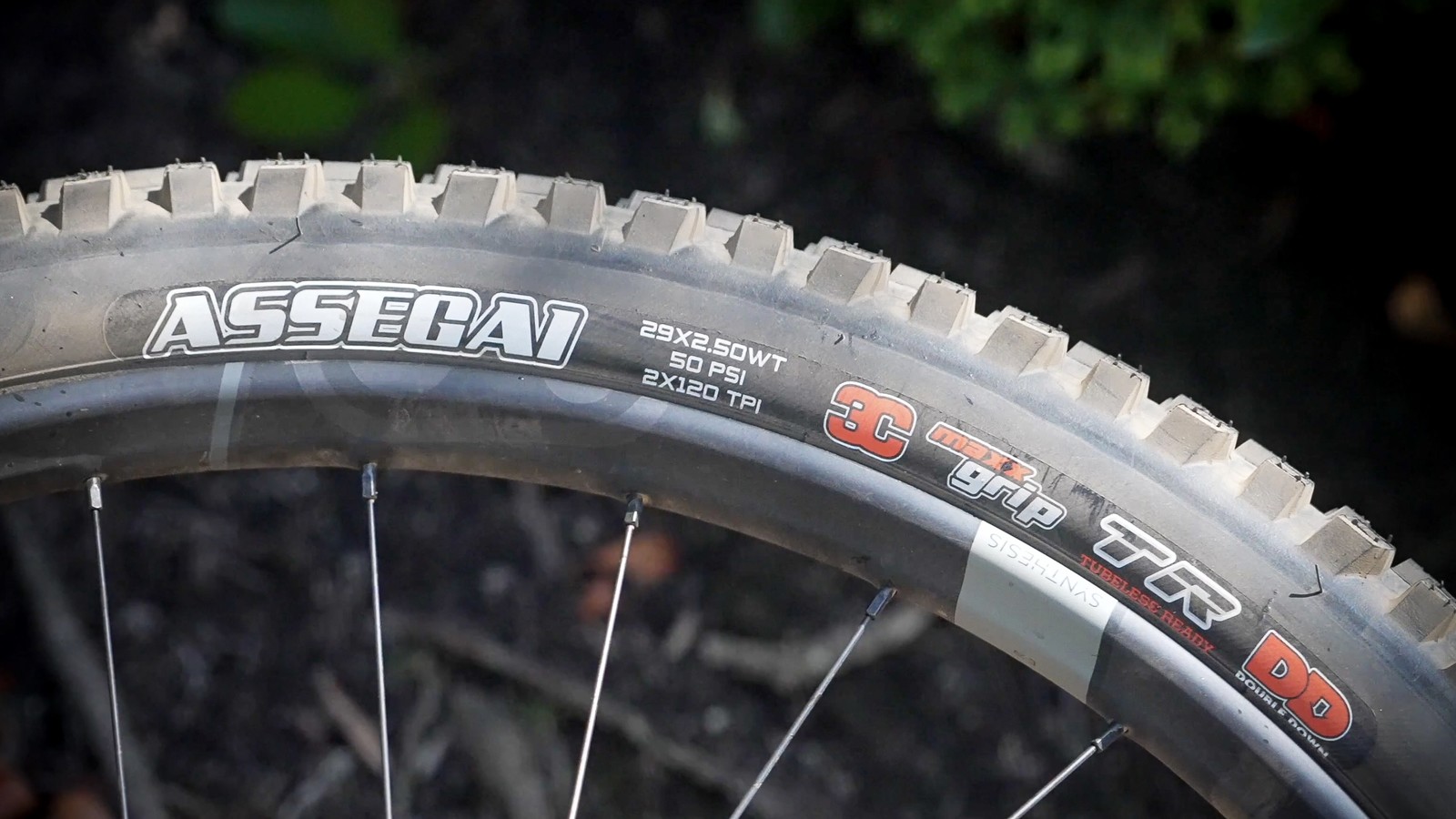
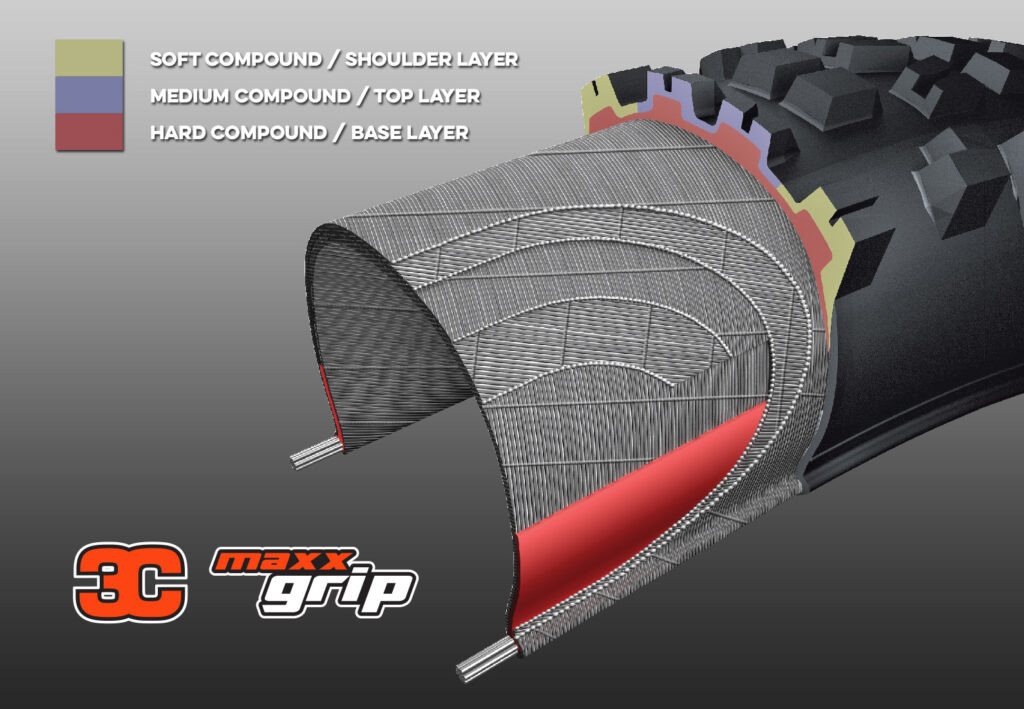
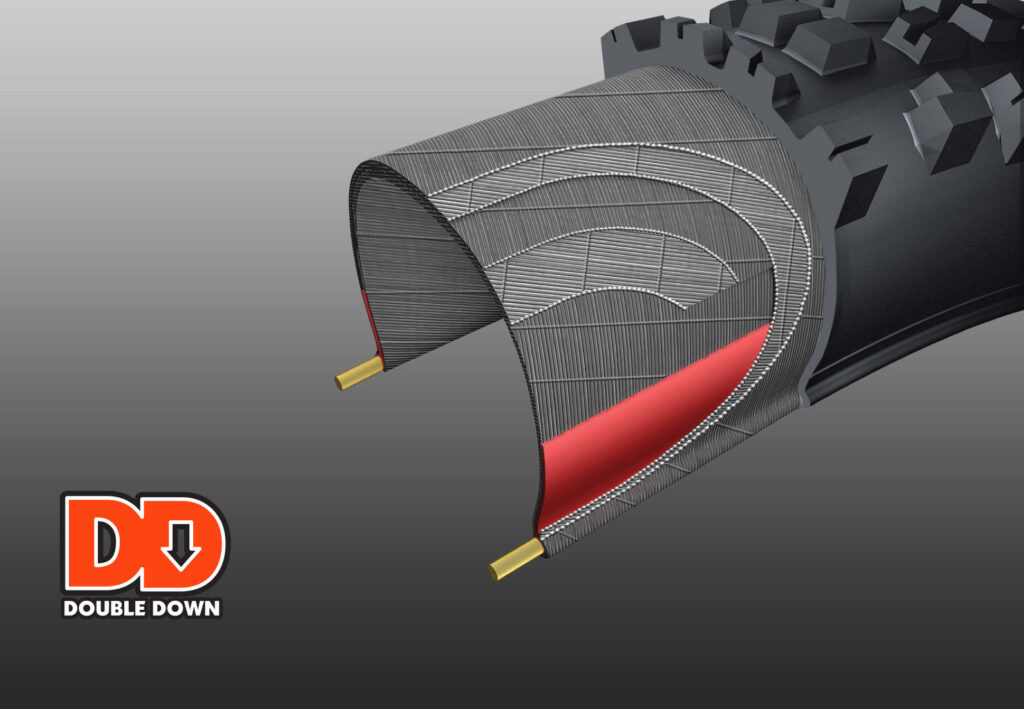









View replies to: What’s the Best MTB Front Tire? | Vital MTB Roundup
Comments